Simons Investigators
- Email:
[email protected]
Simons Investigators are outstanding theoretical scientists who receive a stable base of research support from the foundation, enabling them to undertake the long-term study of fundamental questions.
The Investigator program has been discontinued.
Simons Investigators in Mathematics, Physics, Astrophysics and Computer Science
The intent of the Simons Investigators in Mathematics, Physics, Astrophysics and Computer Science programs is to support outstanding theoretical scientists in their most productive years, when they are establishing creative new research directions, providing leadership to the field and effectively mentoring junior scientists. A Simons Investigator is appointed for an initial period of five years. Renewal for an additional five years is contingent upon the evaluation of scientific impact of the Investigator.
Simons Investigators in Mathematical Modeling of Living Systems (MMLS)
This program aims to help the research careers of outstanding scientists working on mathematical and theoretical approaches to topics in the life sciences. A Simons Investigator in MMLS is appointed for five years.
Math+X Investigators
This program encourages novel collaborations between mathematics and other fields in science or engineering by providing funds to professors to establish programs at the interface between mathematics and other fields of science or engineering. A Math+X Investigator is appointed for an initial period of five years. Renewal for an additional five years is contingent upon the evaluation of scientific impact of the Investigator.
- Email:
[email protected]
- Email:
[email protected]
2023
Aaron Naber, Ph.D.
Northwestern University
Aaron Naber is a geometric analyst working on the regularity, singularity and topology of geometrically motivated equations. Naber has proved, together with collaborators, the rectifiable structure for singularities of geometric equations, including nonlinear harmonic maps, minimal hypersurfaces and spaces with lower Ricci bounds. This direction of analysis has led to the resolution of several open problems and conjectures, including the energy identity for Yang Mills and the L2 curvature conjecture. In another direction, Naber has settled, together with coworkers, a variety of open problem on spaces with lower Ricci bounds, including the codimension four conjecture and the Milnor conjecture.
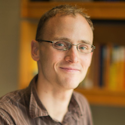
Davesh Maulik, Ph.D.
Massachusetts Institute of Technology
Davesh Maulik works in algebraic geometry, with an emphasis on the geometry of moduli spaces. In many cases, this involves using ideas from neighboring fields such as mathematical physics, symplectic geometry and representation theory. His most recent work has focused on moduli spaces of Higgs bundles and various conjectures regarding their structure.
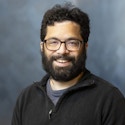
Jacob Tsimerman, Ph.D.
University of Toronto
Jacob Tsimerman is a number theorist working at the intersection of analytic number theory, algebraic geometry and Hodge theory. Much of his work has been on the subject of ‘unlikely intersections,’ which is a web of finiteness conjectures asserting that rational solutions should only exist for geometrically motivated reasons. With collaborators, he has recently proven the André-Oort conjecture. Tsimerman’s other work has included applying the methods of logic via o-minimality to Hodge theory, resulting in the development of powerful new methods and a proof of the Griffiths conjecture.
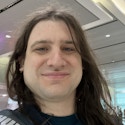
Vlad Vicol, Ph.D.
New York University
Vlad Vicol works in the field of nonlinear PDEs, focusing on models arising in fluid dynamics. His main contributions concern the regularity of critical active scalar equations, the vanishing viscosity limit in the presence of boundaries, the construction of turbulent weak solutions for both Euler and Navier-Stokes, and the analysis of multi-dimensional shock waves.
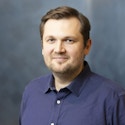
Emanuele Berti, Ph.D.
Johns Hopkins University
Emanuele Berti is a theorist whose research interests include black holes, neutron stars, gravitational-wave astronomy and astrophysical tests of general relativity. He has worked on various topics in gravitational-wave science, including black hole quasinormal modes, higher multipole radiation and spin precession in binary systems, astrophysical scenarios for the formation and evolution of compact binaries, and modified theories of gravity. Berti is contributing to the development of the science case for the space-based detector LISA and for next-generation ground-based detectors.

Aram Harrow, Ph.D.
Massachusetts Institute of Technology
Aram Harrow studies quantum computing and information. He works to understand the capabilities of the quantum computers and quantum communication devices we will build in the future, and in the process, he creates connections to other areas of theoretical physics, mathematics and computer science. He has developed quantum algorithms for solving large systems of linear equations and hybrid classical-quantum algorithms for machine learning. Harrow has also contributed to the intersection of quantum information and many-body physics, with work on thermalization, random quantum dynamics and the “monogamy” property of quantum entanglement.
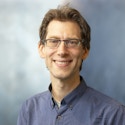
Daniel Jafferis, Ph.D.
Harvard University
The research of Daniel Jafferis spans many areas of quantum gravity, string theory and quantum field theory. Current directions include understanding bulk observables in holography and extracting lessons for de Sitter spacetime, precisely formulating the statistical ensembles encoding the pseudo-random aspect of chaotic conformal field theories, understanding entanglement entropy in string theory, finding physically realizable quantum systems that exhibit features of emergent gravity, and formulating and resolving the overcounting problem of semi-classical black hole microstates. The overarching goal is to find the full formulation of the laws of physics, in particular the fundamental framework that describes quantum gravity in an expanding universe.
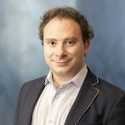
David Kaplan, Ph.D.
Johns Hopkins University
David Kaplan is a theoretical physicist proposing extensions to the standard models of particle physics and cosmology and finding new ways to test them experimentally. He has discovered models of a naturally small cosmological constant and Higgs mass, classical solutions for firewalls in general relativity, and causal modifications of quantum mechanics. He has also found testable models of dark matter, dark energy and dark radiation. He has proposed algorithms to discover both heavy and long-lived particles at colliders, as well as techniques for discovering dark matter and new elementary forces using new technologies in novel ways.
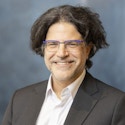
Norman Yao, Ph.D.
Harvard University
Norman Yao’s research combines ideas from atomic physics, condensed matter and quantum information, with a focus on proposing laboratory realizations of novel strongly-correlated phenomena. He is known for his work on non-equilibrium phases of matter, ranging from time crystals to Floquet topological phases. Yao’s recent work has contributed to our understanding of ergodicity in many-particle classical and quantum systems, as well as strategies to avoid this fate. With collaborators, he introduced new ways to characterize topological phases, many-body quantum teleportation and entanglement dynamics in a wide array of quantum simulation platforms.

Ruth Baker, Ph.D.
University of Oxford
Ruth Baker’s research develops and draws together concepts from a number of fields, including statistical physics, multiscale modelling, stochastic processes, computational statistics and machine learning, to provide novel insights into the mechanisms governing cell and developmental biology phenomena. She works in close collaboration with experimental researchers to iteratively test and refine novel mechanistic hypotheses using repeated rounds of model development, calibration and refinement. In turn, the biological problems she studies drive the development of new theory and methodologies.
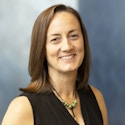
Leonid Mirny, Ph.D.
Massachusetts Institute of Technology
Leonid Mirny combines biophysical modeling with analysis of large genomics data to address fundamental problems in biology. Mirny aims to understand how long DNA molecules of chromosomes are folded in 3D, and how this 3D organization is used by living cells. The Mirny group has proposed that DNA is folded by molecular motors that perform “loop extrusion.” The loop extrusion hypothesis has been confirmed experimentally and has revolutionized our understanding of chromosomes across all organisms. Now, Mirny aims to understand how cells use this and other physical mechanisms to regulate its genes, repair DNA and maintain epigenetic memory.
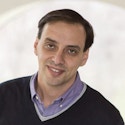
Eugene Chiang, Ph.D.
University of California, Berkeley
Eugene Chiang is a theorist with interests in all things planetary. He has worked on proto-planetary disks, post-planetary debris disks, orbital dynamics and planetary atmospheres. A current focus is determining the properties of planets still accreting from their parent disks, to help interpret observations and place planet formation on an empirical footing.
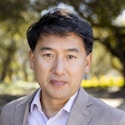
Philip Hopkins, Ph.D.
California Institute of Technology
Phil Hopkins is a theoretical astrophysicist working on a range of problems including galaxies, stars, planets, dark matter and black holes. He has pioneered development of novel high-resolution numerical computational simulations to study complex multi-physics astrophysical systems, in particular those where microphysical and macroscopic astrophysical scales are strongly-coupled. His group has played a crucial role in constraining and testing different dark matter models, understanding the origins and nature of super-massive black holes and quasars, explaining why stars and galaxies have the masses and structure we observe, and exploring the physics of relativistic particles in interstellar gas.
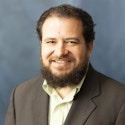
Vinod Vaikuntanathan, Ph.D.
Massachusetts Institute of Technology
Vinod Vaikuntanathan’s research is in the foundations of cryptography and its applications to theoretical computer science at large. He is known for his work on fully homomorphic encryption, a powerful cryptographic primitive that enables complex computations on encrypted data, as well as lattice-based cryptography, which lays down a new mathematical foundation for cryptography in the post-quantum world. Recently, he has been interested in the interactions of cryptography with quantum computing, as well as with statistics and machine learning.
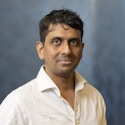
Santosh Vempala, Ph.D.
Georgia Institute of Technology
Santosh Vempala has made fundamental advances in the theory of algorithms: for sampling high-dimensional distributions, computing the volume of a convex body, optimization over convex sets, randomized matrix approximation, as well as basic problems in machine learning. In many cases, these were the first polynomial-time algorithms and co-evolved with insights into high-dimensional geometry and probability. Recent highlights include proving that sufficiently sparse linear systems can be solved faster than matrix multiplication (Ax=b, the workhorse of modern computation); extending sampling methods to non-Euclidean (Riemannian) geometries to make them faster (leading to practical methods in very high dimension); pioneering techniques for algorithmic robust statistics (immune to adversarial corruptions); and developing a rigorous theory of computation and learning in the brain in a biologically plausible model (how does the mind emerge from neurons and synapses?). He continues to be puzzled by whether an unknown polytope can be learned in polytime from samples, whether its diameter is bounded by a polynomial in its description length, whether its volume can be computed in polytime without randomization, and whether the answers to these questions will be discovered by humans or by AI.
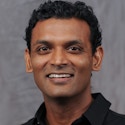
Virginia Williams, Ph.D.
Massachusetts Institute of Technology
Virginia Vassilevska Williams' research is broadly in theoretical computer science, and more specifically in designing algorithms for graphs and matrices, and uncovering formal relationships between seemingly very different computational problems. She is known for her work on fast matrix multiplication, both in co-developing the world's fastest algorithm and in proving limitations on the known techniques for designing matrix multiplication algorithms. Williams is also one of the original founders and leaders of fine-grained complexity, a blossoming new branch of computational complexity.
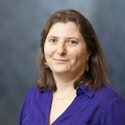
2022
Ivan Corwin, Ph.D.
Columbia University
Ivan Corwin works at the interface of probability and mathematical physics with a particular interest in exactly solvable probabilistic models and stochastic partial differential equations. Much of his work has focused around the Kardar-Parisi-Zhang equation and its universality class.
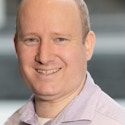
Nick Sheridan, Ph.D.
University of Edinburgh
Nick Sheridan's work centers around Kontsevich's homological mirror symmetry conjecture, which posits a deep relationship between symplectic topology and algebraic geometry. Working mainly on the symplectic side, he has developed tools for proving the conjecture and applied them to prove the conjecture in a number of cases, most notably the quintic threefold. In cases where the conjecture is established, Sheridan has given applications to enumerative geometry and symplectic topology.
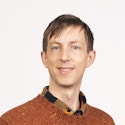
Wei Zhang, Ph.D.
Massachusetts Institute of Technology
Wei Zhang is a number theorist working on automorphic representations and arithmetic geometry. He studies special values of zeta and L-functions and their relation to periods and heights of algebraic cycles on moduli spaces over global fields. A focus of his research is various high-dimensional generalizations of the Gross-Zagier formula. In particular, Zhang proposed the relative trace formula approach, which has led to many new deep questions relating the harmonic analysis on spaces with a group action over local fields to the arithmetic intersection theory on local Shimura varieties.
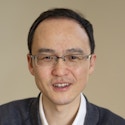
Chenyang Xu, Ph.D.
Princeton University
Chenyang Xu works in algebraic geometry, with an emphasis on understanding the structure of higher dimensional algebraic varieties. With his collaborators, Xu led the establishment of a rich algebraic K-stability theory for Fano varieties, crowned by the novel construction of projective K-moduli spaces parametrizing Fano varieties. The new algebraic method invented by Xu and his collaborators, largely built on the minimal model program in birational geometry, also provides a solution to the algebraic Yau-Tian-Donaldson conjecture for all Fano varieties, and a radically new singularity theory.
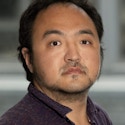
Ehud Altman, Ph.D.
University of California, Berkeley
Ehud Altman studies quantum many-body phenomena in condensed matter and quantum information systems. He is known for introducing dynamical renormalization group methods to describe many-body localization and for establishing the nature of large-scale fluctuations in exciton-polariton condensates. Altman’s recent work has contributed to elucidating the role of quantum information, entanglement and chaos in the dynamics of many-body systems. With collaborators, he introduced the notion of Krylov complexity as a holographic-like principle for quantum operator growth in generic systems and helped to understand information phase transitions in quantum circuits using tools from field theory and statistical mechanics.
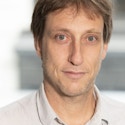
Michael Levin, Ph.D.
University of Chicago
Michael Levin’s research combines ideas from condensed matter physics, quantum information and mathematics with a focus on the theory of topological phases of matter. In one line of research, he has constructed exactly solvable lattice models that realize a general class of two-dimensional strongly interacting topological phases. These lattice models have become a useful theoretical tool for studying anyons. He has also introduced a way to probe topological phases using entanglement entropy, which has given rise to new numerical methods. Recently, Levin has made contributions to the theory of the bulk-boundary correspondence for topological matter, both in equilibrium and in periodically driven systems.
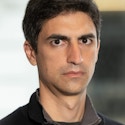
Mariangela Lisanti, Ph.D.
Princeton University
Mariangela Lisanti is a theoretical astroparticle physicist studying the nature of dark matter. Her research is interdisciplinary and often involves application of novel data science techniques or collaborations with experimentalists and observers. Lisanti helped to pioneer the use of simplified models in Large Hadron Collider searches, proposed new directions for dark matter experiments and developed original analysis methods for studying dark matter annihilation in gamma rays. Most recently, Lisanti has been harnessing data from astrophysical surveys to probe the fundamental nature of dark matter and map its distribution in the Milky Way.
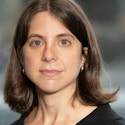
Douglas Stanford, Ph.D.
Stanford University
Douglas Stanford works on quantum gravity and its connection to quantum mechanics, mainly in the context of simple toy models of black holes. He and his collaborators showed that black holes exhibit the butterfly effect and used this as a starting point to explore chaos in quantum many-body systems. Stanford’s recent work has focused on aspects of black holes that appear in tension with the rules of ordinary quantum mechanics and, in particular, on the search for spacetime effects that can resolve the tension.
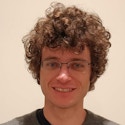
Jesse Thaler, Ph.D.
Massachusetts Institute of Technology
Jesse Thaler is a theoretical particle physicist who fuses techniques from quantum field theory and machine learning to address questions in fundamental physics. His current research focuses on maximizing the discovery potential of the Large Hadron Collider through new theoretical frameworks and novel data analysis techniques. Thaler is an expert in jets, which are collimated sprays of particles copiously produced at colliders, and he studies the substructure of jets to enhance the search for new phenomena and illuminate the dynamics of gauge theories.
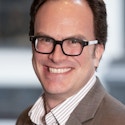
Olga Dudko, Ph.D.
University of California, San Diego
Olga Dudko is a theoretical physicist who explores the phenomena of the living world. Her research is driven by the notion that deep, physics-based conceptual approaches can encompass living-system complexity. The theory of single-molecule force spectroscopy developed by Dudko and collaborators has been widely used for extracting activation energies and rate constants from experiments on conformational transitions in biological macromolecules. Recent areas of research include the spatiotemporal organization of chromosomes, virus-host cell interactions and neuronal communication. Dudko’s research strives for a unifying understanding of disparate biological processes through analytically tractable theories that reveal unifying principles and are predictive in experiments.
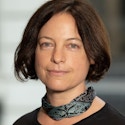
Joshua Weitz, Ph.D.
Georgia Institute of Technology
Joshua Weitz explores how viruses transform the fate of cells, individuals, populations and ecosystems. In collaboration with experimentalists, his research in viral ecology has revealed latent structures of virus-host infection networks, identified principles underlying the therapeutic use of viruses against bacterial pathogens and shown how repeated infections catalyze the diversification of complex virus-microbe communities. Weitz's recent and ongoing work on pandemic dynamics examines how behavior change and asymptomatic spread shape outbreaks and can be used to inform data-driven interventions.
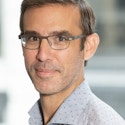
Alex Schekochihin, Ph.D.
University of Oxford
Alex Schekochihin is interested in the fundamental nature and practical implications of turbulence in plasmas. His main contributions have concerned the physics of turbulent dynamo (believed responsible for much of the observed cosmic magnetism), the free-energy cascade and the interplay between microscale instabilities and mesoscale dynamics in astrophysical plasmas from galaxy clusters to solar wind, and mechanisms for “phase transitions” between low- and high-transport states in fusion devices. Recently, Schekochihin proposed a theory of fluidization of collisionless plasma turbulence, owing to suppression of Landau damping by stochastic echoes. This has led to his ongoing interest in the general problem of turbulent relaxation and universal equilibria in collisionless plasmas.
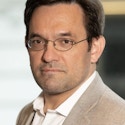
Tracy Slatyer, Ph.D.
Massachusetts Institute of Technology
Tracy Slatyer is a theoretical physicist working at the interface of particle physics, cosmology and astrophysics, seeking clues to the mystery of dark matter in astrophysical and cosmological data. She was a co-discoverer of the giant gamma-ray structures known as the “Fermi Bubbles” and has done influential work on new theories of dark matter and possible effects of dark matter interactions from the early universe to the present day.
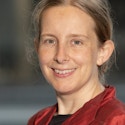
Shayan Oveis Gharan, Ph.D.
University of Washington
Shayan Oveis Gharan’s research exploits deep tools from mathematics, such as the theory of real stable and log-concave polynomials, spectral graph theory and high-dimensional simplicial complexes to design and analyze algorithms for discrete objects. He is known for his results on improved approximation algorithms for classical optimization problems such as traveling salesperson problems, as well as his analysis of the mixing time of Markov chains to efficiently sample from complex probability distributions such as the uniform distribution over the bases of a matroid.
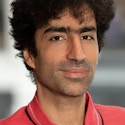
Shachar Lovett, Ph.D.
University of California, San Diego
Shachar Lovett works broadly in theoretical computer science and related mathematics. He focuses on the study of structure and randomness, and how they are pivotal to our understanding of efficient computation. One facet of Lovett’s work is discovering the mathematical structures that underlie efficient computation, such as combinatorial structure in complexity theory, geometric structure in machine learning and algebraic structure in coding theory. Another facet is understanding the power of randomness in computation. Structure and randomness can be seen as complementary, and Lovett’s work aims to identify the fracture lines between structure and randomness, towards a better understanding of computation.
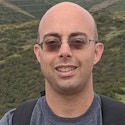
Gregory Valiant, Ph.D.
Stanford University
Gregory Valiant works at the intersection of algorithms, information theory, learning and statistics to understand how to extract as much information as possible from data in various fundamental settings. What information can be inferred if the amount of data is sublinear in the support size or dimensionality of the distribution in question? How do restrictions on the amount of available memory affect the time or amount of data required to learn or optimize? Can we make learning and estimation algorithms robust to outlying training data or settings where the test and training sets are dissimilar?
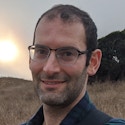
2021
Guido De Philippis, Ph.D.
New York University
Guido De Philippis works in geometric measure theory, calculus of variations and partial differential equations. His main interest is the understanding of regularity (or lack thereof) of solutions of geometric variational problems, ranging from minimal surfaces to free boundary problems. Recently, in collaboration with Filip Rindler, he obtained a fine description of the structure of the singular part of measures satisfying a linear partial differential equation (PDE) constraint. By suitably choosing the PDE constriction, the result allowed a number of open questions to be solved: extension of Alberti’s rank-one theorem to the space of bounded deformation (BD) functions, converse of the Rademacher theorem and structure of Lipschitz differentiability spaces.
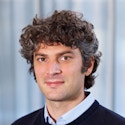
June Huh, Ph.D.
Stanford University
June Huh studies discrete objects using geometric methods. An unexpected relation between combinatorics and algebraic geometry found by Huh was used in his proof of Read's conjecture in graph theory. In recent works, he and his collaborators proposed a more general framework that tightens the connection between the two seemingly disparate fields. This led to proofs of several other long-standing problems in combinatorics, such as the ultra-log-concavity conjecture of Mason and the top-heavy conjecture of Dowling–Wilson.
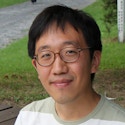
Lin Lin, Ph.D.
University of California, Berkeley
Lin Lin is an applied mathematician working in electronic structure theory. With collaborators, he has developed efficient, accurate and scalable algorithms in Kohn–Sham density functional theory, localization theory, many-body perturbation theory and quantum embedding theory. Several new methods have been adopted by electronic structure software packages widely used in quantum chemistry, quantum physics and materials science. Recently, Lin has contributed to neural network-based methods for accelerating molecular simulations, as well as quantum algorithms for solving high-dimensional linear algebra problems with applications to electronic structure calculations.

Assaf Naor, Ph.D.
Princeton University
Assaf Naor’s research focuses on analysis and geometry in high dimensions, with emphasis on understanding the structure of metric spaces, including the extent to which they can be realized in “nicer” geometries. He harnesses such insights for a variety of applications in several areas of pure mathematics (analysis, geometry, probability, combinatorics, group theory), and also in order to chart the possibilities and limitations of algorithms. Much of Naor’s work makes progress on the long-standing Ribe program, which is a web of conjectures and analogies between linear and nonlinear geometries that is inspired by a classical rigidity theorem of Ribe.
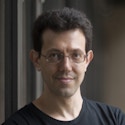
Xie Chen, Ph.D.
California Institute of Technology
Xie Chen studies exotic topological phenomena that can emerge in strongly interacting quantum many-body systems. Her work uses ideas and tools in quantum information to explore topological states of matter and study the relationships between them. She discovered and systematically constructed symmetry-protected topological phases in strongly interacting systems in two and higher dimensions. She proposed methods to classify and detect anomalies in symmetry-enriched topological phases. Recently, Chen’s work on fracton phases generalized the notion of phase and universality to properly capture the unusual “beyond topology” phenomena discovered in certain quantum error-correction codes.
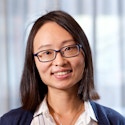
Shanhui Fan, Ph.D.
Stanford University
Shanhui Fan works broadly on photonics theory. Fan has made fundamental contributions in temporal coupled mode theory, non-reciprocity as induced by dynamic modulation, photonic gauge potentials, waveguide quantum electrodynamics, solar cell light trapping theory and daytime radiative cooling. Recently, he has been working on concepts of synthetic dimensions as a way to explore Hermitian and non-Hermitian topological physics in photonics.
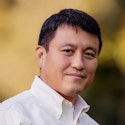
Peter Graham, Ph.D.
Stanford University
Peter Graham is interested in the fundamental laws of nature. Motivated by long-standing mysteries in particle physics and cosmology such as the weakness of gravity and the nature of dark matter, he proposed several new theories for these open questions. Additionally, he helped pioneer the use of ultrahigh-precision technologies for experimentally probing these questions. With experimental colleagues, he proposed novel approaches for detecting dark matter, new forces and gravitational waves. This gave rise to experiments using techniques from atomic physics, nuclear magnetic resonance and quantum information which are poised to shed new light on our universe.

Surjeet Rajendran, Ph.D.
Johns Hopkins University
Surjeet Rajendran has invented new experimental methods to detect gravitational waves, dark matter and dark energy. These methods are being implemented by many laboratories around the world. He has also developed theoretical tools to solve outstanding problems of particle physics such as the hierarchy and vacuum energy problems via cosmological evolution. His recent theoretical interests have been in identifying novel gravitational phenomena within general relativity, permitting new experimentally testable approaches to resolving cosmological singularities and solutions to the black hole information problem.
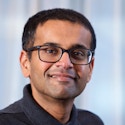
L. Mahadevan, Ph.D.
Harvard University
L. Mahadevan is a professor of applied mathematics, physics, and organismic and evolutionary biology. His work attempts to understand motion and matter at the observable scale of “middle earth” by integrating experiments, theory and computation. Areas of interest include the patterns of shape and flow of inanimate matter and the dynamics of sentient living matter that can self-organize, perceive and act. His publications range over subjects such as the geometry and physics of soft materials, the mathematics of origami and kirigami, the morphodynamics of cells and organs, and the ethology of collective behavior. Mahadevan is a MacArthur Fellow and a Fellow of the Royal Society.
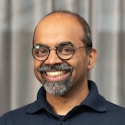
Ilya Nemenman, Ph.D.
Emory University
Ilya Nemenman, in close collaboration with experimentalists, works on theoretical understanding of biological information processing, aiming to build models that show physics-level precision in agreeing with experimental data. He and his collaborators were some of the first groups to estimate information-theoretic channel capacity of protein signaling pathways, analyze statistical properties of activity of large genetic and neural networks, discover collective cellular sensing in development, decode high-precision timing codes in neural motor control, and model dynamics of complex animal behavior, such as a bird learning its song.
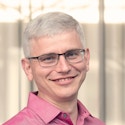
Jonathan Fortney, Ph.D.
University of California, Santa Cruz
Jonathan Fortney models many aspects of the physics of planets, from rocky worlds to gas giants. His work in planetary theory focuses both on exoplanets that orbit distant stars as well as planets in the solar system. His models have provided a framework to understand the atmospheres of exoplanets, their interior structure and thermal evolution, as well as physical processes like helium “rain” deep within Saturn. Fortney often works closely with observers to interpret spectra of exoplanets to better understand their physics, chemistry and clues to their formation.

Yuri Levin, Ph.D.
Columbia University
Yuri Levin works on astrophysics of neutron stars, black holes and gravitational waves. He is known for computations of thermal and quantum noise in LIGO interferometers, for co-discovering a disc of massive stars orbiting the supermassive black hole at the center of the Milky Way, for developing gravitational-wave search algorithms for pulsar timing arrays, and for his work on the dynamics of magnetized neutron stars. Levin is currently attempting to understand the architecture of stellar clusters near supermassive black holes and figure out the origin of pulsar glitches.
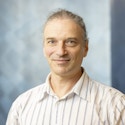
Maria-Florina Balcan, Ph.D.
Carnegie Mellon University
Maria-Florina Balcan’s research spans machine learning, algorithms and algorithmic game theory. She introduced general techniques that helped put modern machine-learning paradigms on solid theoretical foundations, including learning from limited labeled data, distributed learning, noise-tolerant learning and life-long learning. She also provided fundamental contributions to the area of analysis of algorithms beyond the worst-case, by providing both new models of realistic (non worst-case) instances and general techniques for designing and analyzing algorithms derived in a data driven fashion.
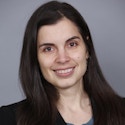
Amit Sahai, Ph.D.
University of California, Los Angeles
Amit Sahai’s research proposes fundamental new concepts in cryptography and establishes new feasibility results. He is best known for his works proposing the notions of indistinguishability obfuscation and functional encryption, and for his recent work establishing the feasibility of indistinguishability obfuscation and functional encryption for general computations based on well-studied hardness conjectures.
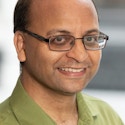
Thomas Vidick, Ph.D.
California Institute of Technology
Thomas Vidick’s research is at the interface of theoretical computer science, quantum information and cryptography. He is known for his work in the theory of quantum interactive proofs, including results on device-independent cryptography, certified randomness and the complexity of quantum multiprover interactive proof systems. The study of quantum entanglement provides a unifying goal behind all these areas and a focal point for his current research.
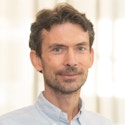
2020
Alexei Borodin, Ph.D.
Massachusetts Institute of Technology
Alexei Borodin is a professor of mathematics at the Massachusetts Institute of Technology. He studies problems on the interface of representation theory and probability that link to combinatorics, random matrix theory and integrable systems. His most recent work carries over the ideas and techniques of the theory of symmetric functions to solvable lattice models of statistical physics.
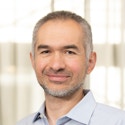
Ciprian Manolescu, Ph.D.
Stanford University
Ciprian Manolescu works in low-dimensional topology and gauge theory. His research is centered on constructing new versions of Floer homology and applying them to questions in topology. With collaborators, he showed that many Floer-theoretic invariants are algorithmically computable. He also developed a new variant of Seiberg-Witten Floer homology, which he used to prove the existence of non-triangulable manifolds in high dimensions.
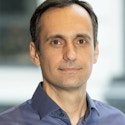
Fernando Codá Marques, Ph.D.
Princeton University
Fernando Codá Marques is a geometer. His recent work, in collaboration with André Neves, developed a full Morse theory for the area functional in closed Riemannian manifolds. The ideas introduced by them have revitalized the subject, leading to the discovery that closed minimal surfaces are ubiquitous in these spaces.
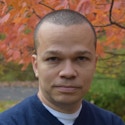
Zhiwei Yun, Ph.D.
Massachusetts Institute of Technology
Zhiwei Yun works at the intersection of representation theory, algebraic geometry and number theory. He uses ideas and techniques from geometry to solve problems in group representations and number theory. He has constructed the first examples of motives of type E_7 and E_8 and solved a related inverse Galois problem. In joint work with Wei Zhang, he has given a geometric interpretation of higher derivatives of L-functions for function fields.
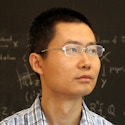
Aashish Clerk, Ph.D.
University of Chicago
Aashish Clerk is a theoretical physicist working at the intersection of condensed matter, quantum optics and quantum information theory. His research focuses on driven-dissipative quantum phenomena and is motivated both by fundamental questions as well as potential applications in quantum technologies. Clerk is best known for his works on quantum optomechanical systems, on quantum amplification and measurement, and on dissipation engineering to realize unidirectional interactions. Clerk’s current work spans topics ranging from quantum transduction and quantum control to the study of new kinds of driven-dissipative bosonic topological phases and non-Hermitian quantum phenomena.

Claudia de Rham, Ph.D.
Imperial College London
Claudia de Rham works at the interface between gravity, particle physics and cosmology. She develops and tests new models to tackle fundamental questions of physics, such as the origin and evolution of the Universe, its accelerated expansion and the nature of gravity. She is known for uncovering the first theoretical framework where the graviton could carry a mass with far-reaching implications for cosmology and gravity. Recently, de Rham has focused on developing consistent effective field theory descriptions of our Universe that may enjoy a standard high-energy completion and on determining new classes of observational signatures.
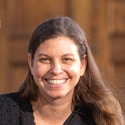
Mohammad Hafezi, Ph.D.
University of Maryland, College Park
Mohammad Hafezi is known for his contributions in a number of works to synthesize and characterize quantum many-body and topological physics beyond electronic systems. Examples include cold atoms, superconducting qubits and photons, where his works on the last one have helped found the field of topological photonics. Some of his current interests include efficient characterization and probing of many-body properties in quantum simulators. His research group is interested in exploring the application of quantum optics to create, probe and manipulate correlated electron systems.
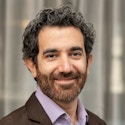
Leonardo Rastelli, Ph.D.
Stony Brook University
Leonardo Rastelli works on a broad range of problems in quantum field theory and string theory. He is known for his contributions to the AdS/CFT correspondence, string field theory, supersymmetric field theories and the conformal bootstrap. He is interested in developing a deeper framework for quantum field theory and quantum gravity, based on symmetry and general consistency principles, in the spirit of the bootstrap.
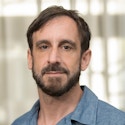
Kathryn Zurek, Ph.D.
California Institute of Technology
Kathryn Zurek is a particle theorist who specializes in theories of dark matter and new ideas for how one might detect it, either in terrestrial laboratories or through astrophysical observation. She is known for her proposal of Hidden Valley theories, which highlighted new experimental signatures at the Large Hadron Collider and opened the new paradigm of hidden-sector dark matter. Zurek also proposed the theory of asymmetric dark matter, which motivates a new class of experiments searching for light dark matter. Recently, she has explored a new direction in experimental signatures of quantum gravity.
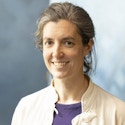
Jané Kondev, Ph.D.
Brandeis University
Jané Kondev uses the tools of theoretical physics to uncover laws that govern the inner workings of cells. His lab works on the regulation of gene expression, the packing of DNA in cells and the self-organization of the cytoskeleton. One of the major themes of the research is how genes specify geometry, such as the size of cytoskeletal structures or the shape of the cell’s genome. Kondev is the co-author of the book Physical Biology of the Cell, in which life is examined using simple physics models.
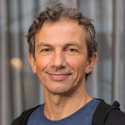
Brian Metzger, Ph.D.
Columbia University
Brian Metzger is a theoretical astrophysicist whose main interests lie in the births and deaths of compact objects. His work on neutron star mergers played an important role in interpreting the electromagnetic signal which accompanied the first merger detected via gravitational waves. As a result of this discovery, these rare events are believed to be among the main sources of the heaviest elements in the Universe. Metzger also works on supernovae, gamma-ray bursts, thermonuclear explosions on white dwarfs and the destruction of stars by massive black holes. He collaborates with astronomers to interpret these events using data across the electromagnetic spectrum.
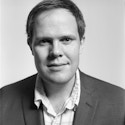
Karin Öberg, Ph.D.
Harvard University
Karin Öberg studies the role of chemistry during planet formation. She combines theory, astronomical observations and experiments to explore the chemical environments within which planets assemble, the links between chemistry and dynamics in planet-forming disks and how the compositions of mature planets depends on the disk environment where they formed. Her models of planet compositions have provided an interpretive framework for the exoplanet community. Öberg’s work on the volatile and organic content of disks has begun to constrain how often we may expect to find planets with similar chemical starting conditions as those in our solar system.
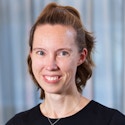
Venkat Guruswami, Ph.D.
Carnegie Mellon University
Venkatesan Guruswami's research has led to major advances in the theory of error-correcting codes, approximate optimization, pseudorandomness and related complexity-theoretic and mathematical aspects. His work on list decoding has yielded codes with minimum possible redundancy for correcting worst-case errors. His recent works include notable progress on polar codes, deletion-correcting codes, codes for cloud storage and constraint satisfaction problems.
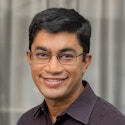
Omer Reingold, Ph.D.
Stanford University
Omer Reingold is the Rajeev Motwani professor of computer science at Stanford University. His research is in the foundations of computer science and most notably in computational complexity, cryptography and the societal impact of computation. Among his fundamental contributions are a small-memory deterministic graph walks, explicit constructions of lossless expander graphs, randomness extractors and pseudorandom functions, as well as establishing influential notions in the area of algorithmic fairness. He is an ACM Fellow, and among his distinctions are the 2005 Grace Murray Hopper Award and the 2009 Gödel Prize.

David Woodruff, Ph.D.
Carnegie Mellon University
David Woodruff works in the foundations of data science, specifically in data streams, machine learning, randomized numerical linear algebra, sketching and sparse recovery. One of his breakthroughs was the first randomized relative error approximation algorithms for least squares regression and low rank approximation that run in input sparsity time (i.e., time proportional to the number of non-zero entries in the input). His work on data streams includes the first optimal algorithms for approximately counting distinct elements, approximating the frequency moments and finding heavy hitters, as well as optimal lower bounds for the complexity of certain algorithms.
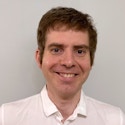
2019
Bhargav Bhatt, Ph.D.
University of Michigan
Bhargav Bhatt works in arithmetic algebraic geometry, with an emphasis on questions in positive and mixed characteristic. His research, which often draws on ideas from derived algebraic geometry, has also contributed to the solution of long-standing problems in commutative algebra and algebraic topology.
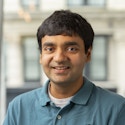
Xiuxiong Chen, Ph.D.
Stony Brook University
XiuXiong Chen is a leading figure in complex geometry with fundamental contributions to the field. He and his collaborators have made major breakthroughs and finally settled several long-standing problems. With S.K. Donaldson and S. Sun, Chen proved the stability conjecture (which goes back to Yau) on Fano Kähler manifolds. With B. Wang, Chen confirmed the Hamilton-Tian conjecture on the Kähler-Ricci flow on Fano manifolds. With J.R. Cheng, Chen found a groundbreaking a priori estimate for Kähler metrics, under assumptions on the scalar curvature, which involved a fourth-order differential equation and verified the fundamental Donaldson geodesic stability conjecture and the properness conjecture.

Nets Katz, Ph.D.
California Institute of Technology
Nets Katz is a harmonic analyst. Much of his work has been focused on the Kakeya problem. Because that problem has such broad connections with different parts of mathematics, it has led him to work in other areas, such as incidence geometry and additive combinatorics. Jointly with Larry Guth, he solved (up to logarithmic factors) the Erdos distinct distances problem, in the process introducing polynomial partitioning which is now having an impact on Kakeya.
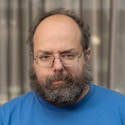
Elchanan Mossel, Ph.D.
Massachusetts Institute of Technology
Elchanan Mossel’s primary research fields are probability theory, combinatorics, theoretical computer science and statistical inference. Mossel is broad and collaborative in his research. Much of his work spans different areas of mathematics or bridges between mathematics and other sciences. With collaborators, he made fundamental contributions to discrete Fourier analysis and its applications to computational complexity and voting theory. In the area he named ‘combinatorial statistics,’ his collaborative work includes important discoveries on tree broadcast models and associated reconstruction problems, detection of block models, the inference of evolutionary histories and, more recently, deep inference.
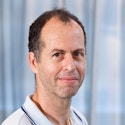
Rouven Essig, Ph.D.
Stony Brook University
Rouven Essig is a theoretical particle physicists whose research focuses on the search for dark matter and other new particles beyond the standard model. He has helped pioneer several novel direct-detection concepts to probe dark matter below the proton mass and has been a leader in establishing this as a new research direction, attracting significant theoretical and experimental efforts. He has also been a leader in conceiving of fixed-target experiments to search for new forces, helping to spawn several new efforts. Although a theorist, he is co-leading or participating in several experiments searching for dark matter and new forces.
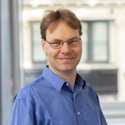
Sean Hartnoll, Ph.D.
Stanford University
Sean Hartnoll’s recent work has aimed to understand the flow of charge and heat in strongly quantum many-body systems without well-defined ‘quasiparticle’ excitations. His research has mobilized fundamental principles of statistical quantum mechanics to constrain this flow, and he has also studied solvable models that can reveal organizing principles behind non-quasiparticle physics. He is known for results on holographic models that translate the dissipative dynamics of black hole event horizons into phenomena of interest in condensed matter systems and has co-authored a book on the resulting holographic quantum matter.
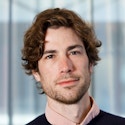
Gil Refael, Ph.D.
California Institute of Technology
Gil Refael is best known for his works on realizing Majorana fermions in solid state systems and on quantum dynamics and control. Refael’s group has introduced the concepts of Floquet topological insulators and topological polaritons, and additionally worked on disordered magnets, superconductors and superfluids. Currently, he focuses on implementing concepts from topological physics to quantum control, as well as the microscopic origins of many-body localization.
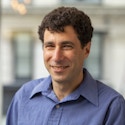
Neal Weiner, Ph.D.
New York University
Neal Weiner works on physics beyond the standard model, with an emphasis on understanding dark matter. He was active in developing the cosmology and signals of dark matter with interactions and contributed many ideas that helped shape our current thinking on theories of dark matter. Of late, he has focused on understanding the range of dark structures that may populate the Milky Way and how to detect them with gravitational lensing.
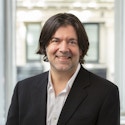
Cenke Xu, Ph.D.
University of California, Santa Barbara
Cenke Xu’s research has contributed to several different topics in theoretical condensed matter physics, such as quantum spin liquid states, interacting topological insulators and more generally symmetry protected topological phases, duality of unconventional 2+1 dimensional quantum critical points, and new understanding of non-Fermi liquid phenomena constructed based on the Sachdev-Ye-Kitaev model and related models. Most recently Xu’s group is also interested in understanding the strongly correlated phenomena observed in graphene-based systems with Moiré superlattice.
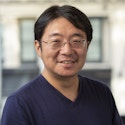
Daniel Kasen, Ph.D.
University of California, Berkeley
Daniel Kasen studies energetic astrophysical phenomena such as supernovae and compact object mergers and their applicability as probes of physics and cosmology. His models of electromagnetic signals have guided observational efforts and played an important role in interpreting the first neutron star merger jointly detected in light and gravitational waves. His work has helped illuminate the diverse ways in which stars die and how the heavy elements in the universe formed from their ashes.
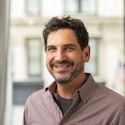
Rachel Mandelbaum, Ph.D.
Carnegie Mellon University
Rachel Mandelbaum is an observational cosmologist who uses data from large sky surveys to measure gravitational lensing (the deflection of light from distant objects by more nearby mass). She works at all stages of the measurement process, including data analysis methodology, production of theoretical predictions and development of statistical methodology. She uses gravitational lensing measurements to reveal the connection between the visible components of galaxies and invisible dark matter, which can answer basic questions about galaxy evolution and to reveal how cosmic structure has grown and evolved, which relates to the accelerated expansion rate of the universe and dark energy.
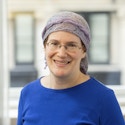
David Blei, Ph.D.
Columbia University
David Blei studies probabilistic machine learning, including its theory, algorithms and application. He has made contributions to unsupervised machine learning for text analysis, approximate Bayesian inference with variational methods, flexible modeling with Bayesian nonparametrics and many applications to the sciences and humanities.
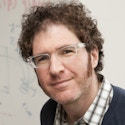
Oded Regev, Ph.D.
New York University
Oded Regev works on mathematical and computational aspects of point lattices. A main focus of his research is in the area of lattice-based cryptography, where he introduced the Learning with Errors (LWE) problem. This problem is used as the basis for a wide variety of cryptographic protocols, including some of the leading candidates for post-quantum secure cryptographic standards. He is also interested in quantum computation, theoretical computer science and, more recently, molecular biology.
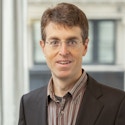
Brent Waters, Ph.D.
University of Texas at Austin
Brent Waters is a leader in the field of cryptography. His pioneering work introduced the concepts of attribute-based encryption and functional encryption. He is known for developing novel proof techniques including lossy trapdoor functions, dual system encryption and punctured programming analysis in cryptographic code obfuscation.
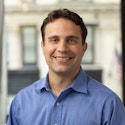
Benjamin Machta, Ph.D.
Yale University
Ben Machta examines how physical laws constrain the design principles of biological systems. His research uses statistical physics, information theory and Riemannian geometry to understand how the need to coordinate and process information constrains function. He has worked to understand how simple models emerge from complex molecular details and to bound the energetic needs of small thermodynamic systems. He has also sought to understand how cells exploit the subtle physics near critical points to sense and respond to their environment.
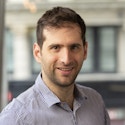
Caroline Uhler, Ph.D.
Massachusetts Institute of Technology
Caroline Uhler has made major contributions to the development of methods in statistics and machine learning for applications in genomics. Her work to date has broken new ground on providing a systematic approach to studying graphical models. In particular, she uncovered statistical and computational limitations for causal inference and developed a novel framework for causal structure discovery from a mix of observational and interventional data. This led to new models and algorithms for inferring gene regulatory networks and for disease diagnostics by integrating gene expression data with the 3-D organization of the genome.
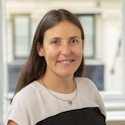
2018
André Arroja Neves, Ph.D.
University of Chicago
André Neves is a leading figure in geometric analysis with important contributions ranging from the Yamabe problem to geometric flows. Jointly with Fernando Marques, he transformed the field by introducing new ideas and techniques that led to the solution of several open problems which were previously out of reach. Together or with coauthors, they solved the Willmore conjecture, the Freedman-He-Wang conjecture in knot theory and Yau’s conjecture on the existence of minimal surfaces in the generic case.

Sylvia Serfaty, Ph.D.
New York University
Sylvia Serfaty works on understanding the behavior of physical systems via the tools of mathematical analysis, partial differential equations and probability. A large part of her work has focused on the Ginzburg-Landau model of superconductivity, tackling and largely solving the problem of why and when vortices form the so-called Abrikosov triangular lattices. She has recently turned her attention to the statistical mechanics and dynamics of Coulomb-type systems and other many-particle systems with long-range interactions.
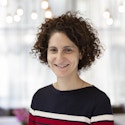
Akshay Venkatesh, Ph.D.
Stanford University
Akshay Venkatesh’s research is in number theory and related fields. A major focus of his recent work has been the topology of locally symmetric spaces, in particular on new phenomena that occur when one leaves the setting of Shimura varieties. In that context, he has postulated, and gathered evidence for, a deep relationship between this topology and the motivic cohomology of certain algebraic varieties. Venkatesh resigned his Investigatorship in 2019 to take a position at the IAS.

Liang Fu, Ph.D.
Massachusetts Institute of Technology
Liang Fu contributed to the prediction of three-dimensional topological insulators and their material realizations. Since then, he has extensively developed topological band theory for crystalline insulators, semimetals and superconductors. He and his collaborators introduced a leading platform for creating Majorana quasiparticles and proposed realistic schemes for Majorana-based quantum computing. He also helped develop the concept of fracton topological order. Some of Fu’s recent interests include non-Hermitian quantum mechanics, topological properties of quantum particles and dynamics, nonlinear transport and optical properties in solids, and potential applications of topological quantum materials.
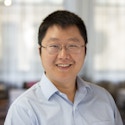
Kenneth Intriligator, Ph.D.
University of California, San Diego
Kenneth Intriligator’s research goal is to contribute to a deeper understanding of quantum field theory, which is the underlying framework of nature. He explores the varied phenomena and phases of quantum fields by developing symmetry-based methods to find new exact results, interconnections and dualities among theories.

Xiao-Liang Qi, Ph.D.
Stanford University
Xiao-Liang Qi’s recent work focuses on the role of quantum entanglement in quantum many-body physics and quantum gravity. He helped relate holographic duality with tensor network states, a geometrical representation of quantum many-body states. He has also worked on topological states of matter. His work pointed out the relation between topological insulators in three spatial dimensions and axion electrodynamics.
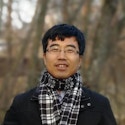
Shinsei Ryu, Ph.D.
Princeton University
Shinsei Ryu’s research highlights coherence, entanglement and topology in condensed matter — unique features of quantum systems which can give rise to phenomena with no classical counterparts. He has worked on the classification of topological phases of matter with symmetries and the characterization of strongly interacting many-body systems by quantum entanglement using the idea of holographic duality.
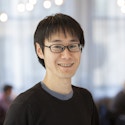
David Tong, Ph.D.
University of Cambridge
David Tong works on quantum field theory. A recurrent theme is the interplay between dualities, solitons and string theory. He is known for his contributions to inflation, supersymmetric gauge theories, holography and condensed matter. He is also known for his lecture notes on various topics in theoretical physics.

Yanbei Chen, Ph.D.
California Institute of Technology
Yanbei Chen made major contributions to understanding the noise of laser-interferometer gravitational-wave detectors that arise from quantum fluctuations of light and matter. He proposed conceptual interferometer designs that can achieve better sensitivity — also formulating a vision for experimentally testing quantum mechanics and quantum measurement theory on macroscopic objects. Chen made important contributions to gravitational-wave data-analysis strategies and works on using gravitational-wave observations to test the predictions of general relativity in strong gravity and to study the structures of black holes.
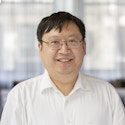
Ue-Li Pen, Ph.D.
University of Toronto
Ue-Li Pen is known for developing innovative tools to create new fields of research. His pioneering work on 21 cm intensity mapping opens a new window for the precision study of dark energy and neutrinos. Recently, his use of natural plasma in our galaxy as a giant telescope spawned the field of scintillometry, enabling new glimpses into enigmatic pulsars and the unsolved fast radio bursts. The orders of magnitude improved precision may improve our understanding of space-time, including gravitational waves.
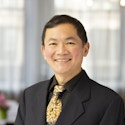
Constantinos Daskalakis, Ph.D.
Massachusetts Institute of Technology
Constantinos Daskalakis works on computation theory and its interface with game theory, economics, probability theory, statistics and machine learning. His work has resolved long-standing open problems about the computational complexity of the Nash equilibrium, the mathematical structure and computational complexity of multi-item auctions, and the behavior of machine-learning methods such as the expectation-maximization algorithm. He has obtained computationally and statistically efficient methods for statistical hypothesis testing and learning in high-dimensional settings, as well as results characterizing the structure and concentration properties of high-dimensional distributions.
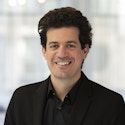
Ran Raz, Ph.D.
Princeton University
Ran Raz’s main research area is computational complexity theory, with a focus on proving lower bounds for computational models. He works on Boolean and algebraic circuit complexity, communication complexity, probabilistically checkable proofs and interactive proof systems. In the last years, he studied relations between communication complexity and information complexity of communication protocols and worked on unconditional lower bounds on the number of samples needed for learning, under memory constraints.
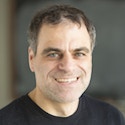
Claudia Clopath, Ph.D.
Imperial College London
Claudia Clopath’s work contributed to our understanding of learning in the brain. She developed mathematical models of learning to link the plasticity observed experimentally at the neural level to the function at the network and behavioral level.
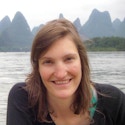
Lucy Colwell, Ph.D.
University of Cambridge
Lucy Colwell has demonstrated that the three-dimensional structure of proteins can be determined from large sequence alignments. Her current research develops methods for relating phenotype to genotype, using large data sets from high throughput biological experiments, focusing mainly on proteins, small molecules and nucleic acids.
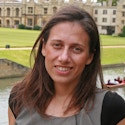
Eleni Katifori, Ph.D.
University of Pennsylvania
Eleni Katifori is a recipient of a Burroughs Wellcome Career Awards at the Scientific Interface Award and an National Science Foundation Career Award. Her research interests are primarily theoretical and span broad areas from soft matter physics with a focus on biologically inspired physics, thin shell elasticity and biological transport networks.
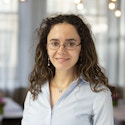
Daniela Witten, Ph.D.
University of Washington
Daniela Witten is a leader in the field of statistical machine learning. Her work focuses on the development of supervised and unsupervised learning methods for making sense of large and messy data sets arising from genomics, neuroscience and other fields. She has developed new frameworks for performing clustering, graphical modeling and matrix decompositions in the high-dimensional setting.
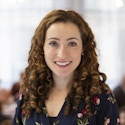
2017
Simon Brendle, Ph.D.
Columbia University
Simon Brendle has achieved major breakthroughs in geometry including results on the Yamabe compactness conjecture, the differentiable sphere theorem (joint with R. Schoen), the Lawson conjecture and the Ilmanen conjecture, as well as singularity formation in the mean curvature flow, the Yamabe flow and the Ricci flow.
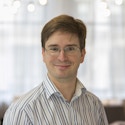
Ludmil Katzarkov, Ph.D.
University of Miami
Ludmil Katzarkov has introduced novel ideas and techniques in geometry, proving long-standing conjectures (e.g., the Shavarevich conjecture) and formulating new conceptual approaches to open questions in homological mirror symmetry, rationality of algebraic varieties and symplectic geometry.
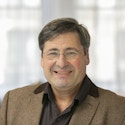
Igor Rodnianski, Ph.D.
Princeton University
Igor Rodnianski is a leading figure in the field of partial differential equations. He has recently proven theorems concerning the full nonlinear dynamics of the Einstein equations, in both the weak and strong field regimes, and has obtained new results regarding gravitational radiation associated to black hole spacetimes.
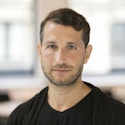
Allan Sly, Ph.D.
University of California, Berkeley
Allan Sly resolved long-standing open problems on the computational complexity of phase transitions and on the dynamics of the Ising model.
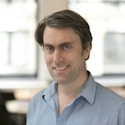
Nigel Cooper, Ph.D.
University of Cambridge
Nigel Cooper has shown how to design optical lattices for cold atoms that provide controllable laboratories for exploring the physics of interacting particles in the presence of gauge fields. He is also known for foundational works on the topological Kondo effect and on quantum oscillations in topological insulators.
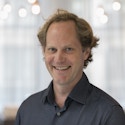
Steven Gubser, Ph.D.
Princeton University
Steven Gubser is known for foundational work on the gauge-string duality and its applications to heavy-ion and condensed matter physics, including a gravitational dual of superconductivity and studies of bulk flows of quark-gluon plasmas. He is also noted for work on semi-classical strings in anti-de Sitter space.
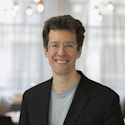
Shamit Kachru, Ph.D.
Stanford University
Shamit Kachru has done foundational work on string duality and string compactification. His recent work explores deep mathematics connecting automorphic forms, black holes, and string vacua, and develops quantum field theories describing ‘non-Fermi liquids’ and other novel phases in condensed matter physics.
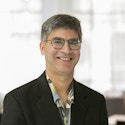
Anders Sandvik, Ph.D.
Boston University
Anders Sandvik is widely recognized for his development of stochastic series expansion methods for quantum problems and for his creative applications of these and related methods to topics including deconfined quantum criticality and optimization problems.

Eva Silverstein, Ph.D.
Stanford University
Eva Silverstein’s research connects the mathematical structure of string theory to predictions for cosmological observables, with implications for dualities, space-time singularities and black hole physics. Her work on axion monodromy provided a theoretically consistent model of large-field inflation.
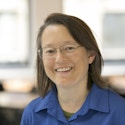
Eve Ostriker, Ph.D.
Princeton University
Eve Ostriker has made major contributions to our understanding of the role of the interstellar medium in star formation and galactic structure and evolution, with a focus on the role of turbulence and on the effects of energy returned by massive stars to the interstellar medium.
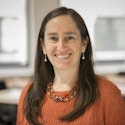
Wayne Hu, Ph.D.
University of Chicago
Wayne Hu has shown how cosmological observations can provide information about fundamental physics topics such as neutrino masses and dark energy.

Scott Aaronson, Ph.D.
University of Texas at Austin
Scott Aaronson has established fundamental theorems in quantum computational complexity and inspired new research directions at the interface of theoretical computer science and the study of physical systems.
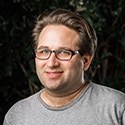
Boaz Barak, Ph.D.
Harvard University
Boaz Barak has worked on cryptography, computational complexity and algorithms. He developed new non-black-box techniques in cryptography and new semidefinite programming-based algorithms for problems related to machine learning and the unique games conjecture.

James R. Lee, Ph.D.
University of Washington
James R. Lee is one of the leaders in the study of discrete optimization problems and their connections to analysis, geometry and probability. His development of spectral methods and his work on convex relaxations has led to breakthroughs in characterizing the efficacy of mathematical programming for combinatorial optimization.
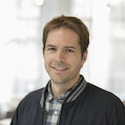
Arvind Murugan, Ph.D.
University of Chicago
Arvind Murugan works on how organisms enhance information uptake from the environment by using inference from past experience and has applied such ideas to self-assembly dynamics, olfaction, circadian clocks and stress-response pathways.
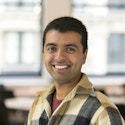
David Schwab, Ph.D.
City College of New York
David Schwab has developed theories of signaling and social aggregation in the social amoeba Dictyostelium and has shown how tensor-network methods from computational quantum physics can be used in machine learning.
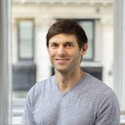
Aryeh Warmflash, Ph.D.
Rice University
Aryeh Warmflash has developed systems to mimic embryonic development in vitro using human embryonic stem cells and is developing dynamical system models of cell fate patterning and morphogenesis that can be rigorously compared with quantitative data on in vitro development.

Daniel Weissman, Ph.D.
Emory University
Daniel Weissman has shown that the generation of ‘irreducible complexity’ happens most frequently in large populations and that the speed of adaptation is limited by the frequency of genetic recombination.

Andrea Bertozzi, Ph.D.
University of California, Los Angeles
Andrea Bertozzi has contributed to many areas of applied mathematics including the theory of swarming behavior, aggregation equations and their solution in general dimension, the theory of particle-laden flows in liquids with free surfaces, data analysis/image analysis at the micro and nano scales and the mathematics of crime.
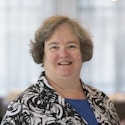
Amit Singer, Ph.D.
Princeton University
Amit Singer is one of the leaders in the mathematical analysis of noisy data provided by cryo-EM.
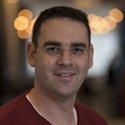
2016
Vladimir Markovic, Ph.D.
University of Oxford
Vladimir Markovic has made fundamental contributions to the theory of three-dimensional manifolds, resolving several long-standing problems, among them the proof of the Thurston conjecture concerning immersed almost-geodesic surfaces in closed hyperbolic three-manifolds.
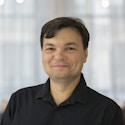
James McKernan, Ph.D.
University of California, San Diego
James McKernan, in collaboration with Caucher Birkar, Paolo Cascini, and Christopher D. Hacon, has established one of the cornerstones of the Minimal Model Program: the finite generation of canonical rings in all dimensions.
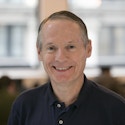
Bjorn Poonen, Ph.D.
Massachusetts Institute of Technology
Bjorn Poonen has contributed decisively to many areas revolving broadly around the study of Diophantine equations. Among his achievements are the construction of examples of threefolds without rational points but vanishing local and global obstructions, new heuristics concerning rational points on elliptic curves and results about rational points on curves of higher genus.
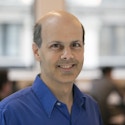
Mina Aganagic, Ph.D.
University of California, Berkeley
Mina Aganagic applies insights from quantum physics to mathematical problems in geometry and topology. She made deep and influential conjectures in enumerative geometry, knot theory and mirror symmetry using predictions from string theory and from M-theory.
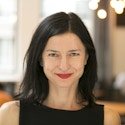
Andrea Alù, Ph.D.
University of Texas at Austin
Andrea Alù’s work on the manipulation of light in artificial materials and metamaterials has shown how clever designs may surpass what had previously been thought to be limitations on wave propagation in materials. He has developed new concepts for cloaking, one-way propagation of waves in materials, dramatic enhancement of nonlinearities in nanostructures and ultrathin optical devices based on metasurfaces and twisted metamaterials.
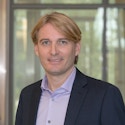
Andrei Beloborodov, Ph.D.
Columbia University
Andrei Beloborodov applies first-principles physics to astrophysical systems, and his work provides crucial new insights on how exotic astronomical objects work. He has done important research on compact objects like neutron stars and black holes and is particularly well-known for his studies of gamma-ray bursts, magnetars and pulsars.
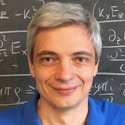
B. Andrei Bernevig, Ph.D.
Princeton University
Andrei Bernevig is a leader in the lively field of topological electronic states in solids. His initial proposal of the quantum spin Hall effect in HgTe quantum wells was soon followed by dramatic experimental confirmation. He has developed a theoretical framework for topological insulators and written a highly regarded book on the subject. His work on topological superconductivity in metal chains on superconducting surfaces, as well as his prediction of two types of Weyl semimetal states in transition metal monophosphides and WTe2, has stimulated considerable theoretical and experimental activity.
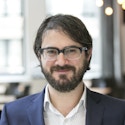
Garnet K.-L. Chan, Ph.D.
California Institute of Technology
Garnet Chan’s research lies at the interface of theoretical chemistry, condensed matter physics and quantum information theory, and is concerned with the phenomena and simulation methods associated with quantum many-particle systems. Some current problems of interest include metalloenzymes and biological catalysts, transition metal oxides and superconductivity, and conjugated organic systems and light harvesting. He has contributed to a wide range of quantum simulation methods, including density matrix renormalization and tensor network algorithms, quantum embedding theories and local correlation approximations.
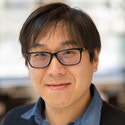
Daniel Eisenstein, Ph.D.
Harvard University
Daniel Eisenstein is a leading figure in modern cosmology. He is known for utilization of the baryon acoustic oscillations (BAO) standard ruler for measuring the geometry of the universe, which underpins several large upcoming ground and space missions. Eisenstein blends theory, computation and data analysis seamlessly to push the boundaries of current-day research in cosmology.
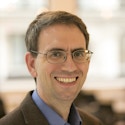
Anton Kapustin, Ph.D.
California Institute of Technology
Anton Kapustin’s work lies at the interface of physics and mathematics. He applied ideas from gauge theory to the study of the geometric Langlands program in mathematics and has applied sophisticated mathematics to the classification of exotic quantum states of matter.
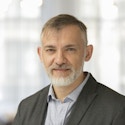
Madhu Sudan, Ph.D.
Harvard University
Madhu Sudan is known for his work in computational complexity theory. He has made fundamental contributions in the areas of probabilistically checkable proofs, nonapproximability of optimization problems and computational aspects of error-correcting codes. More recently, he initiated the study of universal semantic communication.
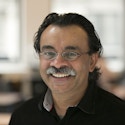
David Zuckerman, Ph.D.
University of Texas at Austin
David Zuckerman is a leader in pseudorandomness and randomness extraction, an area that his early work pioneered. He has a number of beautiful and important results in construction and application of extractors, including applications to coding theory, computational complexity and cryptography, as well as his recent breakthrough result with two-source extractors.
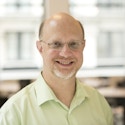
Surya Ganguli, Ph.D.
Stanford University
Surya Ganguli’s work combines theory with computation, recording, analysis of data, and modeling, contributing to our understanding of how the brain works. He has made fundamental contributions to the mechanisms of short- and long-term memory. His work also addresses difficult problems in machine learning.
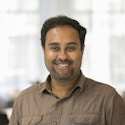
Kirill Korolev, Ph.D.
Boston University
Kirill Korolev works at the interface of biophysics, statistical physics, soft condensed-matter physics and ecology. He develops elegant theories and combines them with the results of controlled experiments to address topics ranging from spreading of cell populations on a 2-D substrate, cancer progression, and ecology. His work is unified by the theme of how complex interactions determine the dynamics of biological systems.
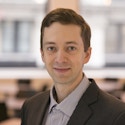
Madhav Mani, Ph.D.
Northwestern University
Following thesis work on fluid mechanics and soft matter physics, Madhav Mani transitioned to studying the mechanics of development and gene regulation in organisms. In collaboration with experimentalists, he combined mathematical modeling with quantitative analysis of growing tissues to shed light on how cells collectively develop preferred orientations. Using model-based forced-inference techniques, he also reconstructed the dynamics of networks that drive cellular flows during early embryonic development.
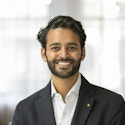
Lisa Manning, Ph.D.
Syracuse University
Lisa Manning started her research career in the physics of glasses, i.e., how a disordered group of molecules or particles freezes into a rigid solid at a well-defined temperature. She then turned her attention to morphogenesis, the process by which embryos transform from a spherical egg to a shape we recognize as an insect, plant or mammal, showing that aspects of this process could be modeled by surface tension in analogy with the description of immiscible liquids. Her most recent work uses ideas from the physics of glasses to describe the mobility of cells organized in sheets and applies to a broad class of biological tissues, including embryos and cells from asthma patients.
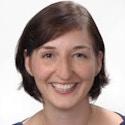
Ingrid Daubechies, Ph.D.
Duke University
Ingrid Daubechies constructed the first example of what mathematicians call “wavelets,” which have had an immense impact on pure and applied mathematics. She has made and continues to make creative applications of wavelets to a large variety of problems in engineering and other fields.
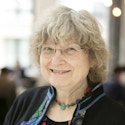
2015
Ian Agol, Ph.D.
University of California, Berkeley
Ian Agol has made major contributions to three-dimensional topology and hyperbolic geometry, completing some of Thurston’s problems elucidating the structure of 3-manifolds. He proved several deep and long-standing conjectures, including the Virtual Haken conjecture, the Marden Tameness conjecture and the Simon conjecture.
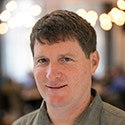
Ben Green, Ph.D.
University of Oxford
Ben Green is an expert in analytic number theory. Among his achievements is the Green–Tao theorem, establishing that primes contain arbitrarily long arithmetic progressions.
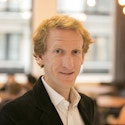
Raphaël Rouquier, Ph.D.
University of California, Los Angeles
Raphaël Rouquier has initiated a new field in mathematics, ‘higher representation theory.’ He constructed novel categories of geometric and representation-theoretic interest and applied these to problems in the theory of finite groups, Lie theory, algebraic geometry and mathematical physics.

Christopher Skinner, Ph.D.
Princeton University
Christopher Skinner works in number theory and arithmetic geometry. One of his striking recent results is a proof, in joint work with collaborators, that a positive proportion of elliptic curves defined over the rational numbers satisfy the Birch–Swinnerton-Dyer conjecture.

Dan Boneh, Ph.D.
Stanford University
Dan Boneh is an expert in cryptography and computer security. One of his main achievements is the development of pairing-based cryptography, giving short digital signatures, identity-based encryption and novel encryption systems.
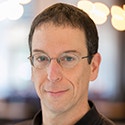
Subhash Khot, Ph.D.
New York University
Subhash Khot initiated a new direction in computational complexity theory and approximation algorithms, based on his Unique Games conjecture, which is currently one of the most important conjectures in theoretical computer science.
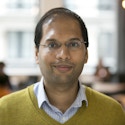
Christopher Umans, Ph.D.
California Institute of Technology
Christopher Umans works on complexity theory, in particular, algorithms and randomness in computations. He has established new upper bounds for the complexity of matrix multiplication and developed a novel algorithm for polynomial factorization.
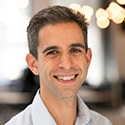
Jonathan Feng, Ph.D.
University of California, Irvine
Jonathan Feng is recognized as one of the leaders in the theoretical study of dark matter, known for his work in constructing theoretical models, deducing observational consequences, and motivating and interpreting experimental searches for dark matter.
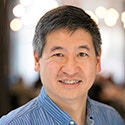
Alexei Kitaev, Ph.D.
California Institute of Technology
Alexei Kitaev’s work on topologically protected states of matter helped found the field of topological quantum computing; his prediction that topological superconductors may sustain Majorana fermions has initiated a major experimental activity. His most recent work concerns a simple quantum model that exhibits emergent gravity. Another topic of Alexei’s research is the mathematical description of quantum phases of matter.
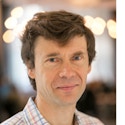
Andrea Liu, Ph.D.
University of Pennsylvania
Andrea Liu is making foundational contributions to the field of mechanics, in particular to the behavior of disordered packings of particles ranging in size from atoms or molecules (glass) to sand grains. With Nagel, she introduced the concept of jamming, explaining how random assemblies of closely packed objects become rigid. Building on this work and her subsequent analysis of the jamming transition, Liu has provided new insights into the elastic and flow properties of highly defected solids, identifying the topological defects whose motion allows flow and the soft modes associated with them.
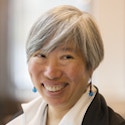
Mark Van Raamsdonk, Ph.D.
University of British Columbia
Mark Van Raamsdonk uses the holographic insights from the gauge-gravity duality to obtain new results in the theory of quantum gravity. He is particularly known for his recent results relating the geometrical structure of spacetime to entanglement structure of the holographically dual boundary quantum field theory.
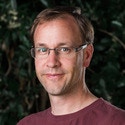
Ashvin Vishwanath, Ph.D.
Harvard University
Ashvin Viswanath is a leading quantum condensed matter physicist, known for his work on quantum phase transitions beyond the Landau–Wilson–Fisher paradigm, his recent theoretical prediction of Weyl semimetals and his generalizations of the topological insulator concept beyond the single-particle approximation.
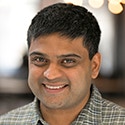
Anastasia Volovich, Ph.D.
Brown University
Anastasia Volovich’s work on gauge and gravity theories has introduced a new perspective on Feynman diagram calculations along with powerful and extremely efficient methods for their evaluation. Her ongoing work is uncovering deep mathematical structures within the gauge theories of particle physics.
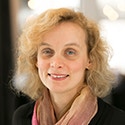
Matthieu Wyart, Ph.D.
New York University
Matthieu Wyart’s work has created a new scientific understanding of the physics of disordered and glassy systems. His study of soft modes controlled by random geometry in systems of closely-packed particles is recognized as a major advance, and his introduction of the idea of marginal stability unifies a wide range of phenomena, providing new insights into the statics and dynamics of glassy systems. Wyart resigned his Investigatorship in 2015 to move to a position at EPFL, Lausanne.

Michael Desai, Ph.D.
Harvard University
Michael Desai combines theoretical and experimental work to bring quantitative methodology to the field of evolutionary dynamics; he and his group are particularly known for their contributions in the area of statistical genetics.
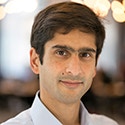
Andrew Mugler, Ph.D.
Purdue University
Andrew Mugler works on sensing and information processing in cells. He is particularly known for work demonstrating that spatial effects at the molecular level, such as protein clustering, can alter sensing and computation at the cellular level. His future research will involve combining the analysis of single-cell sensing with cell-cell communication to develop a theory of collective sensing, applicable to multicellular processes such as cancer metastasis.

James O’Dwyer
University of Illinois at Urbana-Champaign
James O’Dwyer is known for his innovative work bringing new ideas from statistical physics to bear on the analysis of ecological problems. His very recent work on coevolution in microbial communities is recognized as opening a new direction for research.
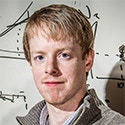
Michael Weinstein, Ph.D.
Columbia University
Michael Weinstein’s work bridges the areas of fundamental and applied mathematics, physics and engineering. He is known for his elegant and influential mathematical analysis of wave phenomena in diverse and important physical problems. His and his colleagues’ work on singularity formation, stability and nonlinear scattering has been central to the understanding of the dynamics of coherent structures of nonlinear dispersive wave equations arising in nonlinear optics, macroscopic quantum systems and fluid dynamics. This led to work on resonances and radiation in Hamiltonian partial differential equations, with applications to energy flow in photonic and quantum systems. Recently, he has explored wave phenomena in novel structures such as topological insulators and metamaterials.
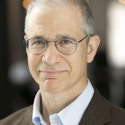
2014
Alex Eskin, Ph.D.
University of Chicago
Alex Eskin is a leading geometer with important contributions to geometric group theory, ergodic theory and number theory. He has applied ideas from dynamical systems to solve counting problems in the theory of Diophantine equations, the theory of the mapping class group and mathematical billiards on rational polygons.
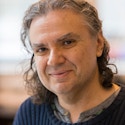
Larry Guth, Ph.D.
Massachusetts Institute of Technology
Larry Guth is a geometer with outstanding contributions to Riemannian geometry, symplectic geometry and combinatorial geometry. In Riemannian geometry, he solved a long-standing problem concerning sharp estimates for volumes of k-cycles. In symplectic geometry, he disproved a conjecture concerning higher-dimensional symplectic invariants by constructing ingenious counterexamples. In combinatorial geometry, he adopted a recent proof of the finite field analog of the Kakeya problem to the Euclidean context. He and Bourgain established the best current bounds to the restriction problem. Extending this work, he and Katz essentially solved one of the most well-known problems in incidence geometry, Erdős’s distinct distance problem, which was formulated in the 1940s.
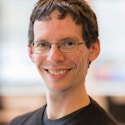
Richard Kenyon, Ph.D.
Yale University
Richard Kenyon’s central mathematical contributions are in statistical mechanics and geometric probability. He established the first rigorous results on the dimer model, opening the door to recent spectacular advances in the Schramm–Loewner evolution theory. In most recent work, he introduced new homotopic invariants of random structures on graphs, establishing an unforeseen connection between probability and representation theory.
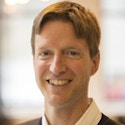
Andrei Okounkov, Ph.D.
Columbia University
Andrei Okounkov’s work spans a wide range of topics at the interface of representation theory, algebraic geometry, combinatorics and mathematical physics. He has made major contributions to enumerative geometry of curves and sheaves, the theory of random surfaces and random matrices. His papers reveal hidden structures and connections between mathematical objects and introduce deep new ideas and techniques of wide applicability.
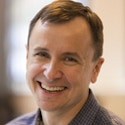
Moses Charikar, Ph.D.
Princeton University
Moses Charikar is one of the world’s leading experts on the design of approximation algorithms. He gave an optimal algorithm for the unique games, a central problem in complexity theory. His work sheds light on the strengths and limitations of continuous relaxations for discrete problems. He has uncovered new obstructions to dimension reduction and compression of geometric data. His algorithms for locality-sensitive hash functions are now de facto standard in real-life applications.
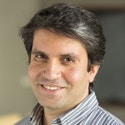
Shang-Hua Teng, Ph.D.
University of Southern California
Shang-Hua Teng is one of the most original theoretical computer scientists in the world, with groundbreaking discoveries in algorithm design, spectral graph theory, operations research and algorithmic game theory. In joint work with Dan Spielman, Shang-Hua introduced smoothed analysis, a new framework that has served as a basis for advances in optimization, machine learning and data mining. His work laid foundations for many algorithms central in network analysis, computational economics and game theory.
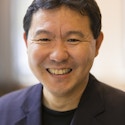
Patrick Hayden, Ph.D.
Stanford University
Patrick Hayden’s work on the requirements for secure communication through quantum channels transformed the field of quantum information, establishing a general structure and a set of powerful results that subsumed most of the previous work in the field as special cases. More recently, he has used quantum information theory concepts to obtain new results related to the quantum physics of black holes.
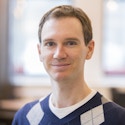
Marc Kamionkowski, Ph.D.
Johns Hopkins University
Marc Kamionkowski is one of the leading theorists working at the intersection of particle physics, cosmology and astrophysics. His early work helped found the field of precision cosmology, showing how observations of the angular structure of the cosmic microwave background revealed information about fundamental-physics effects in the early Universe. He has also done work that has been crucial to our understanding of the physics of dark matter. His review articles and talks have helped define this new and growing field. Kamionkowski’s recent work centers on the development of new methods for the use of astrophysical measurements to probe properties of fundamental physical interest.
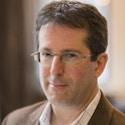
Leo Radzihovsky, Ph.D.
University of Colorado Boulder
Leo Radzihovsky is a condensed matter physicist whose work bridges the divide between the classical and quantum aspects of the subject, using mathematical tools and insights developed in one field to make seminal contributions in the other. His focus is on systems where fluctuations and heterogeneity play qualitative roles. He is known for his work on bent-core and other exotic liquid crystals; on fluctuating membranes and driven elastic media in the presence of quenched disorder, including the prediction of the transverse smectic phase; and on degenerate atomic gasses, where his rigorous work on the BCS-BEC crossover, particularly in systems with narrow Feshbach resonances, with and without “spin” imbalance, uncovered a host of new phenomena including topological phase transitions.
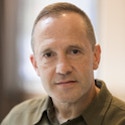
Rachel Somerville, Ph.D.
Rutgers, The State University of New Jersey
Rachel Somerville is a theoretical astrophysicist known for her contributions to the development of `semianalytic modeling’ methods that combine computational and pencil-and-paper theory, and her use of these methods, to further our understanding of the physical mechanisms of the formation, structural evolution and nuclear activity of galaxies. Her work has enabled, for example, the development of a comprehensive picture of the way in which the growth of supermassive black holes, and the energy they release during their formation, is linked with the structural properties of galaxies as well as their star formation activity. Somerville resigned her Investigatorship in 2018 to take a position at the Flatiron Institute.
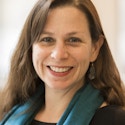
Anatoly Spitkovsky, Ph.D.
Princeton University
Anatoly Spitkovsky’s large-scale computer simulations of astrophysical plasmas have been instrumental in bringing a new level of quantitative precision to the field. His work on particle acceleration in astrophysical shocks is changing the way we understand high-energy astrophysics, and he is also known for his work on pulsar magnetospheres.
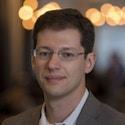
Iain Stewart, Ph.D.
Massachusetts Institute of Technology
Iain Stewart works in the physics of elementary particles, investigating fundamental questions in quantum chromodynamics, i.e., the interactions of quarks and gluons via the strong force. He is particularly known for his role in inventing soft collinear effective field theory, a theoretical tool for understanding the particle jets produced by high energy collisions in accelerators such as the LHC. He has established factorization theorems that enable the clear interpretation and physical understanding of the collision products. Methods he has developed have been used in the search for the Higgs boson, to gain new insights into effects of CP violation in B-meson production and to test for beyond-standard-model physics.
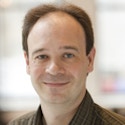
Paul François, Ph.D.
McGill University
Paul François is known for his work on physical aspects of embryonic development, in particular his analysis of the mechanisms underlying embryonic patterning, for example, the role of genetic oscillators in the development of vertebrae. His research plans involve investigations of the physical bounds for information processing in the immune system and further investigation of the physical mechanisms of vertebrae formation.
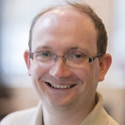
Oskar Hallatschek, Ph.D.
University of California, Berkeley
Oskar Hallatschek studies how large-scale patterns such as collective motion, synchronization, random genetic drift or Darwinian selection emerge in populations from the joint actions of heterogeneous individuals. He is particularly known for his work on the influence of spatial structure on biological processes, for example, how noisy traveling waves control the speed of many important dynamical processes, including biochemical reactions, range expansions, epidemic outbreaks or biological evolution. Hallatschek’s research plan involves extending his work to study the feedback between ecology and evolution, for example, how populations can evolve to become invasive, using growing biofilms as a model system.
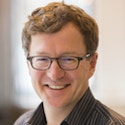
Pankaj Mehta, Ph.D.
Boston University
Pankaj Mehta works on collective behaviors in cell dynamics. He is particularly known for his information theoretic analysis of quorum sensing (where groups of many cells are much more sensitive to changes in environment than single cells). His theoretical work, in collaboration with the Bassler experimental group, demonstrated the importance of interference between different signaling channels and provided a mathematical model of the concentrations of receptor cells, which adjust themselves in response to multiple and time-varying signals so as to respond optimally to environmental cues. His research plans include the development and testing of a new quantitative framework for modeling high-dimensional ‘epigenetic landscapes’ and work on understanding collective behavior in cell populations.
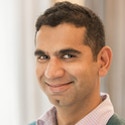
Olga Zhaxybayeva, Ph.D.
Dartmouth College
Olga Zhaxybayeva’s work focuses on how horizontal gene transfer influences (or influenced) the evolution of bacteria and archaea. Her work developing and implementing statistical techniques for monitoring the evolution of all of the genes in a bacterial genome showed that horizontal gene transfer has affected the evolution of much of the genomes of cyanobacteria, thermophilic bacteria and halophilic archaea. This and related work established horizontal gene transfer as an important driver of microbial evolution. Her research plan involves studying gene transfer agents (virus-like particles produced by some bacteria and archaea) to explore the possibility that horizontal gene transfer can provide an evolutionary force favoring cooperation and the emergence of complexity.
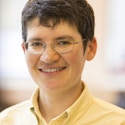
2013
Ngô Bảo Châu, Ph.D.
University of Chicago
Ngô’s proof of the fundamental lemma, a deep conjecture of Langlands, inaugurated a new geometric approach to problems in harmonic analysis based on arithmetic geometry. His ideas have already inspired work in many areas, including mathematical physics and geometric representation theory.
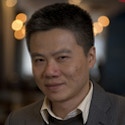
Maryam Mirzakhani, Ph.D.
Stanford University
Mirzakhani’s work was focused on Teichmüller theory and dynamics of natural geometric flows over the moduli space of Riemann surfaces. One of her major results, in joint work with Eskin and Mohammadi, is a proof that stationary measures for the action of SL2(R) on the space of flat surfaces are invariant, a deep and long-standing conjecture.
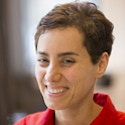
Kannan Soundararajan, Ph.D.
Stanford University
Soundararajan is one of the world’s leaders in analytic number theory and related areas. His work is focused on understanding the zeros and value distribution of L-functions, and on analyzing the behavior of multiplicative functions. In particular, his work (together with co-authors) has led to weak subconvexity bounds for general L-functions and to the proof of the holomorphic quantum unique ergodicity conjecture of Rudnick and Sarnak.
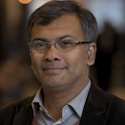
Daniel Tataru, Ph.D.
University of California, Berkeley
Tataru’s work on nonlinear waves has been deep and influential. He proved difficult well-posedness and regularity results for many new classes of equations. This includes geometric evolutions such as wave and Schrödinger maps, quasilinear wave equations, some of which are related to general relativity, as well as other physically relevant models.
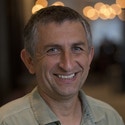
Rajeev Alur, Ph.D.
University of Pennsylvania
Rajeev Alur is a leading researcher in formal modeling and algorithmic analysis of computer systems. A number of automata and logics introduced by him have now become standard models with great impact on both the theory and practice of verification. His key contributions include timed automata for modeling of real-time systems, hybrid automata for modeling discrete control software interacting with the continuously evolving physical environment, and visibly pushdown automata for processing of data with both linear and hierarchical structure such as XML documents.
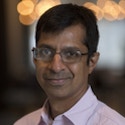
Piotr Indyk, Ph.D.
Massachusetts Institute of Technology
Piotr Indyk is noted for his work on efficient approximate algorithms for high-dimensional geometric problems. This includes the nearest neighbor search, where given a data point, the goal is to find points highly similar to it without scanning the whole data set. To address this problem, he co-developed the technique of locality sensitive hashing, which proved to be influential in many applications, ranging from data mining to computer vision. He has also made significant contributions to sublinear algorithms for massive data problems. In particular, he has developed several approximate algorithms for massive data streams that use very limited space. Recently, he has co-developed new algorithms for the sparse Fourier transform, which compute the Fourier transform of signals with sparse spectra faster than the FFT algorithm.
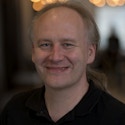
Salil P. Vadhan, Ph.D.
Harvard University
Salil Vadhan has produced a series of original and influential papers on computational complexity and cryptography. He uses complexity-theoretic methods and perspectives to delineate the border between the possible and impossible in cryptography and data privacy. His work also illuminates the relation between computational and information-theoretic notions of randomness, thereby enriching the theory of pseudorandomness and its applications. All of these themes are present in Vadhan’s recent papers on differential privacy and on computational analogues of entropy, which are elegant, impressive, and far-reaching.

Victor Galitski, Ph.D.
University of Maryland, Baltimore
Victor Galitski is a creative and productive scientist who at an early stage in his career has made many important contributions to diverse areas of quantum many-body physics, including applications of quantum theory to cold atomic gases, the theory of exotic spin models, topological insulators and topological superconductivity, quantum fluctuation phenomena, and the dynamics of periodically pumped systems. He is particularly known for his predictions of topological Kondo insulators (supported by recent experiments in samarium hexaboride), as well as his proposals for using multiple laser beams to realize spin-orbit physics in cold atomic gasses, which led to the discovery by Spielman and collaborators of the spin-orbit coupled Bose condensates he predicted.

Randall Kamien, Ph.D.
University of Pennsylvania
Randall Kamien is a leading figure in the theory of topological effects in condensed matter physics, known for the mathematical rigor he brings to his work and in particular for the use of sophisticated and elegant geometrical methods to obtain insight into fundamental aspects of the structure of polymers, colloids, liquid crystals and related materials and into the topological defects occurring in these materials.

Joel Moore, Ph.D.
University of California, Berkeley
Joel Moore is one of the leaders in the study of the topological aspects of electronic physics, particularly known for this work with Balents on strong topological insulators and his work with Orenstein and Vanderbilt on magnetoelectric couplings and optical responses induced by geometric and topological terms in various material classes. He has also obtained significant results on nonequilibrium dynamics of interacting quantum systems, significantly elucidating the role of quantum entanglement in these phenomena.

Dam Thanh Son, Ph.D.
University of Chicago
Dam Thanh Son’s work has deep impact across several subfields of physics. He has written important papers in quantum chromodynamics, theoretical nuclear physics, condensed matter physics and atomic physics. One of his many contributions concerns the duality between black holes in anti-de Sitter space and strongly interacting fluids. His initial work with Policastro and Starinets on the viscosity of the quark-gluon plasma opened new research directions in heavy ion physics and in string theory, and his subsequent work with Sachdev, Herzog and others established the AdS/CFT duality as a crucial theoretical tool of condensed matter physics. His recent work has helped the uncovering of a non-trivial connection between the quantum Hall effect, spin liquids and dualities in quantum field theories.
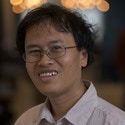
Senthil Todadri, Ph.D.
Massachusetts Institute of Technology
Senthil Todadri’s work with Fisher on Z2 topological order in models of spin liquid states provided key insights and initiated the systematic investigation of gauge structures in many-body systems, now a vital subfield of condensed matter physics. Senthil and co-workers also pioneered the theory of deconfined quantum criticality as a new paradigm for some phase transitions. Senthil and collaborators also introduced the concept of fractionalized Fermi liquids and developed a theory of continuous electronic Mott transitions. His most recent work in the theory of symmetry-protected topological phases and on combining ideas of quantum entanglement and many-body physics continues to move the boundaries of the field quantum many-body physics.
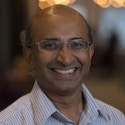
Xi Yin, Ph.D.
Harvard University
Xi Yin is one of the outstanding members of the new generation of theoretical physicists, known for his work on fundamental problems of quantum gravity, including new insights into black hole entropy, for his work with Giombi on higher spin gravity, and for helping to establish the Klebanov–Polyakov conjecture and extensions of the gauge/gravity dualities. He is also credited with important work on supersymmetric Chern–Simons theories and associated connections to M-theory.
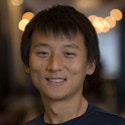
Maarten de Hoop, Ph.D.
William Marsh Rice University
Maarten de Hoop will join Rice University on July 1, 2015, as the Simons Chair in Computational and Applied Mathematics and Earth Science. De Hoop comes to Rice from Purdue University’s Department of Mathematics and Department of Earth, Atmospheric and Planetary Sciences where he has been a professor since 2005. His research interests are in inverse problems, microlocal analysis and computation, and applications in exploration and global seismology and geodynamics. In addition to his appointments at Rice and Purdue, de Hoop has been on the faculty of Colorado School of Mines, is a visiting faculty member at Massachusetts Institute of Technology and the Graduate University of Chinese Academy of Sciences in Beijing, and was a senior research scientist and program leader with Schlumberger Gould Research Center. De Hoop has been a scientific advisor with Corporate Science and Technology Projects, Total American Services, Inc., since 2010. He received his Ph.D. in technical sciences from Delft University of Technology in the Netherlands in 1992.
Over the last 15 years, de Hoop has received significant research support from the energy industry. At Purdue, de Hoop founded the Geo-Mathematical Imaging Group, an industry-university consortium project. He is a member of the Society for Industrial and Applied Mathematics, the American Mathematical Society, the American Geophysical Union, the Society of Exploration Geophysicists, from which he received the J. Clarence Karcher Award, and the Institute of Physics, where he has been a fellow since 2001.
As the Simons Chair, he will continue to work to promote interaction between mathematicians and scholars from other disciplines, and collaboration among academia and industry.

Yun S. Song, Ph.D.
University of California, Berkeley
Yun S. Song was originally trained in mathematics and theoretical physics, but since receiving his Ph.D. in physics from Stanford University in 2001, he has been carrying out interdisciplinary research at the interface between biology and applied mathematics, computer science and statistics. He is particularly interested in statistical inference problems in population genetics, a branch of evolutionary biology closely related to several areas of mathematics, including probability theory, stochastic processes and combinatorics.
Since 2007, Song has been on the faculty in the Departments of Statistics and Electrical Engineering & Computer Sciences at the University of California, Berkeley. He was the chair/organizer of a semester-long interdisciplinary program on “Evolutionary Biology and the Theory of Computing,” held in Spring 2014 at the Simons Institute for the Theory of Computing. As the Calabi-Simons Chair in Mathematics and Biology at the University of Pennsylvania, he will work to promote the interaction between mathematicians and scholars from other disciplines with research interest in biology.
Song’s honors and awards include an NIH Pathway to Independence Award K99/R00 (2006), an Alfred P. Sloan Research Fellowship (2008), a Packard Fellowship for Science and Engineering (2008), an NSF CAREER Award (2009), Jim and Donna Gray Faculty Award for Excellence in Undergraduate Teaching (2013) and a Miller Research Professorship (2014).
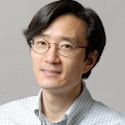
2012
Manjul Bhargava, Ph.D.
Princeton University
Manjul Bhargava pursues algebraic number theory and the geometry of numbers in the tradition of Gauss and Minkowski. Bhargava has inspired an extraordinary resurgence of this field, with wonderful applications. His overarching goal in this work is to count the basic objects of number theory and to make computational conclusions about their asymptotics. For example, it is conjectured that, in a certain natural sense, the average rank of the group of rational points of an elliptic curve defined over the rationals is 1/2. Bhargava and his student Shankar recently showed that it is less than 1. Previously, it was not even known whether the average rank is finite. In joint work with Dick Gross, Bhargava has also shown that the number of rational points on the majority of hyperelliptic curves is bounded by a certain small number independent of the genus of the curve. This work opens up remarkable new vistas in arithmetic and suggests exciting conjectures.
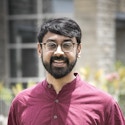
Alice Guionnet, Ph.D.
Massachusetts Institute of Technology
Alice Guionnet has done very important work on the statistical mechanics of disordered systems (and in particular the dynamics and aging of spin glasses), random matrices (with an emphasis on the combinatorics of maps), and operator algebra/free probability. Her work on large deviations for spectra of random matrices has been very influential. She has extended the large deviation principle to the context of Voiculescu’s free probability theory, and in collaboration with Cabanal-Duvillard, Capitaine, and Biane she proved various large deviation bounds in this more general setting. These bounds enabled her to prove an inequality between the two notions of free entropy given by Voiculescu, settling half of the most important question in the field. With her former students M. Maida and E. Maurel-Segala and more recently with Vaughan Jones and D. Shlyakhtenko, Guionnet has studied statistical mechanics on random graphs through multimatrix models. Their work on the general Potts models on random graphs branches out in promising directions within operator algebra theory. Guionnet resigned her Investigatorship in 2016 to move to the École normale supérieure de Lyon in France.
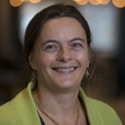
Christopher Derek Hacon, Ph.D.
The University of Utah
Christopher Hacon’s works are among the most important contributions to higher-dimensional algebraic geometry since Mori’s in the 1980s. Hacon and his co-authors have solved major problems concerning the birational geometry of algebraic varieties, including the characterization of irregular varieties, boundedness theorems for pluricanonical maps, a proof of the existence of flips, the completion of the minimal model program for varieties of general type, and bounds for the order of automorphism groups of varieties of general type. His work has also led to solutions of other problems, such as the existence of moduli spaces for varieties of general type and the ascending chain condition for log canonical thresholds.
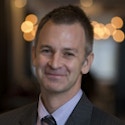
Paul Seidel, Ph.D.
Massachusetts Institute of Technology
Paul Seidel has done major work in symplectic geometry, in particular on questions inspired by mirror symmetry. His work is distinguished by an understanding of abstract algebraic structures such as derived categories, in sufficiently concrete terms to allow one to derive specific geometric results. On the abstract side, Seidel has made substantial advances towards understanding Kontsevich’s homological mirror symmetry conjecture and has proved several special cases of it. In joint papers with Smith, Abouzaid and Maydanskiy, he has investigated the symplectic geometry of Stein manifolds. In particular, work with Abouzaid constructs infinitely many nonstandard symplectic structures on any Stein manifold of sufficiently high dimension.
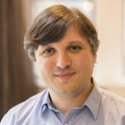
Amit Singer, Ph.D.
Princeton University
Amit Singer works on a broad range of problems in applied mathematics, solving specific applied problems and employing sophisticated theory to allow the solution of general classes of problems. Among the areas to which he has contributed are diffusion maps, cryo-electron microscopy, random graph theory, sensor networks, graph Laplacians, and diffusion processes. His recent work in electron microscopy combines representation theory with a novel network construction to provide reconstructions of structural information on molecules from noisy two-dimensional images of populations of the molecule. He works with a widely varied group of collaborators and graduate students in several disciplines. His work is increasing the range of applicable mathematics. Singer resigned his Math Investigatorship in 2017 to accept the Math+X Investigator award.

Terence Tao, Ph.D.
University of California, Los Angeles
Terry Tao is one of the most universal, penetrating and prolific mathematicians in the world. In over 200 publications (in just 15 years) spanning collaborations with nearly 70 mathematicians, he has established himself as a major player in the disparate fields of harmonic analysis, partial differential equations, number theory, random matrices, and more. He has made deep contributions to the development of additive combinatorics through a blend of harmonic analysis, ergodic theory, geometry and number theory, establishing this field as central to the modern study of many mathematical subjects. This work has led to extraordinary breakthroughs in our understanding of the distribution of primes, expanders in groups, and various questions in theoretical computer science. For example, Green, Tao, and Ziegler have proved that any finite set of linear forms over the integers, of which no two are linearly dependent over the rationals, all take on prime values simultaneously infinitely often, provided there are no local obstructions.
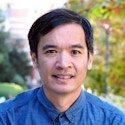
Horng-Tzer Yau, Ph.D.
Harvard University
Horng-Tzer Yau is one of the world’s leading probabilists and mathematical physicists. He has worked on quantum dynamics of many-body systems, statistical physics, hydrodynamical limits, and interacting particle systems. Yau approached the problems of the quantum dynamics of many-body systems with tools he developed for statistical physics and probability. More recently, he has been the main driving force behind some stunning progress on bulk universality for random matrices. With Laszlo Erdős and others, Yau has proven the universality of the local spectral statistics of random matrices, a problem that was regarded as the main challenge of random matrix theory. This argument applies to all symmetry classes of random matrices. In the special Hermitian case, Terence Tao and Van Vu proved bulk universality concurrently. Yau’s work has been extended in many directions, for instance in his recent results on invariant beta ensembles with Paul Bourgade and Laszlo Erdős.
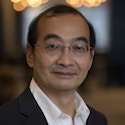
Sanjeev Arora, Ph.D.
Princeton University
Sanjeev Arora has played a pivotal role in some of the deepest and most influential results in theoretical computer science. He started his career with a major contribution to the proof of the PCP theorem, widely regarded as the most important result in complexity theory in the last 40 years. The PCP theorem states roughly that every proof, of any length, can be efficiently converted into a special format, in which correctness can be verified with high probability by reading small parts of it. The PCP theorem revolutionized our understanding of optimization problems and opened new directions in coding, cryptography and other areas. Arora is also known for his breakthroughs in approximation algorithms, having solved longstanding open problems. Notable examples include his algorithms for the Euclidean traveling salesman problem and for the sparsest cut in a graph. Arora has made important contributions on many other topics, including the unique games conjecture (a conjectured strengthening of the PCP theorem) and the power and limitations of hierarchies of linear and semidefinite programs.
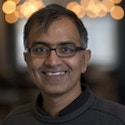
Shafrira Goldwasser, Ph.D.
Massachusetts Institute of Technology
Shafi Goldwasser has had tremendous impact on the development of cryptography and complexity theory. Starting with her thesis on “semantic security”, she laid the foundations of the theory of cryptography. She created rigorous definitions and constructions of well-known primitives such as encryption schemes (both public and private key versions) and digital signatures, and of new ones that she introduced, such as zero-knowledge interactive proof systems invented with Micali and Rackoff. Continuing her work on interactive proofs which allow a probabilistic polynomial time algorithm to verify mathematical proofs via interaction with a powerful prover, Shafi and her co-authors extended the notion of interactive proofs to two-prover systems. The original motivation was cryptographic, but they turned out to be of great significance in complexity theory, paving the way to the equivalent formulation of PCP (probabilistically checkable proofs). The expressive power of two-prover systems is huge (non-deterministic exponential time). furthermore, Shafi and her co-authors showed the connection between a scaled down variant of these systems and the hardness of approximation results for NP-hard problems, which led to the PCP theorem. On the algorithmic front, a problem of great significance is that of recognizing (and generating) prime numbers. Shafi and Kilian designed efficient probabilistic primality provers, which output short proofs of primality, based on the theory of elliptic curves. Together with Goldreich and Ron, Shafi originated the field of combinatorial property testing, devising a class of sub-linear algorithms to test properties in dense graphs.
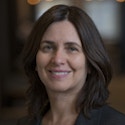
Russell Impagliazzo, Ph.D.
University of California, San Diego
Russell Impagliazzo has made many deep contributions to cryptography and complexity theory. Russell and collaborators showed that one-way functions exist if and only if pseudorandom generators exist. In other words, one can generate sequences of bits for which it is computationally hard to predict the next bit with accuracy much better than random guessing if and only if there are easy-to-compute functions that are hard to invert on the average. Russell also showed that there are worlds in which certain cryptographic primitives are strictly inequivalent. For example, there are worlds where one-way functions exist but public-key encryption is not possible. One of Russell’s major contributions in complexity theory is the exponential-time hypothesis and its implications. The hypothesis states that there are problems where it is hard to speed up the brute-force solution even by a small amount. Russell helped establish the first complete problem for this class. In joint work with Avi Wigderson, Russell showed that if there are problems in exponential time that require exponential-sized circuits to solve, then any efficient algorithm that uses randomization has an equivalent, efficient one that does not.
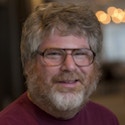
Jon Kleinberg, Ph.D.
Cornell University
Jon Kleinberg is noted for his creativity, intellectual ability, research scholarship, diversity of research interests and the impact of his work. He is best known for his contributions in establishing the computational foundations for information retrieval and social networks. His information retrieval work includes the use of link analysis (e.g., hubs and authorities) for ranking, classification and identifying web communities, the web as a graph, and understanding the success of latent semantic analysis. His work in algorithmic social networks (a field that he can be said to have started) includes the understanding of “small worlds” and decentralized search, analysis of bursty streams and influence spread in social networks. Kleinberg has done work in many other fields, including approximation algorithms, communications networks, queuing theory, clustering, computational geometry, bioinformatics, temporal analysis of data streams, algorithmic game theory, online algorithms and distributed computing. His influence is augmented by popular papers in Science and Nature and by two widely used texts, one with Tardos, Algorithm Design, and one with Easley, Networks, Crowds, and Markets: Reasoning about a Highly Connected World.
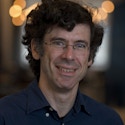
Daniel Spielman, Ph.D.
Yale University
Daniel Spielman’s work has been important to three distinct research communities: theoretical computer science, applied mathematics, and operations research. His work on smoothed analysis of linear programming provides mathematical justification for why the simplex method to solve problems works well in practice even though worst-case analysis shows that there are instances in which it takes exponential time. A small random perturbation converts any linear programming instance into one that, with high probability is solved efficiently by the simplex algorithm. Similar perturbation results hold for many other problems and provide an alternative to worst-case analysis, which may be too pessimistic. His codes based on expander graphs achieve near-optimal rate and nearly linear time encoding and decoding algorithms. In joint work with Teng, Spielman gave a method of preconditioning a Laplacian matrix A, which yields a near-linear-time algorithm for solving the system Ax = b. This leads to highly efficient algorithms for circuit analysis and network flow computations.
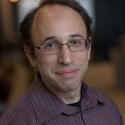
Igor Aleiner, Ph.D.
Columbia University
Igor Aleiner is an influential leader of condensed matter theory research, renowned both for his fundamental contributions to our understanding of the quantum mechanical interplay of electron-electron interactions and disorder in condensed matter systems (in particular many-body localization) and for the theoretical power displayed in his tour de force calculations. He has used a variety of quantum field theoretic and random matrix methods to obtain profound results in the theory of quantum chaos, the study of mesoscopic fluctuation effects in interacting electron systems, the theory of transport in interacting disordered systems, and the properties of graphene.
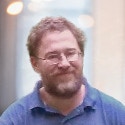
Michael Brenner, Ph.D.
Harvard University
Michael Brenner is a versatile theoretical physicist whose diverse contributions involve collaborations with biologists, physicists, and engineers from a variety of subfields. His work seamlessly integrates analytical and computational approaches to solve problems ranging from fundamental issues in fluid mechanics to engineering design to the evolution of protein functionality and from the aerodynamics of whale flippers to the ejection of fungal spores. He is known for generating creative and original questions and answers. Particularly noteworthy are his achievements in understanding the singularities and nonlinearities that control how droplets, jets and sheets of fluid change shape and break up. His work in this area has potential impact for optimizing devices ranging from inkjet printers to cell sorters. His research has also led to the development of general methods for simplifying the dynamical models of many coupled oscillators that arise in contexts such as atmospheric chemistry.
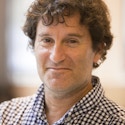
Sharon Glotzer, Ph.D.
University of Michigan
Sharon Glotzer is a leader in the use of computer simulations to understand how to manipulate matter at the nano- and meso-scales. Her work in the late 1990s demonstrating the nature and importance of spatially heterogeneous dynamics is regarded as a breakthrough. Her ambitious program of computational studies has revealed much about the organizing principles controlling the creation of predetermined structures from nanoscale building blocks, while her development of a conceptual framework for classifying particle shape and interaction anisotropy (patchiness) and their relation to the ultimate structures the particles form has had a major impact on the new field of “self-assembly’’. Glotzer recently showed that hard tetrahedra self-assemble into a quasicrystal exhibiting a remarkable twelve-fold symmetry with an unexpectedly rich structure of logs formed by stacks of twelve-member rings capped by pentagonal dipyramids.
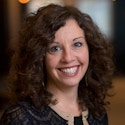
Matthew Hastings, Ph.D.
Duke University
Matthew Hastings’ work combines physical insight and mathematical power to make profound contributions to a range of topics in physics and related fields. His Ph.D. thesis produced breakthrough insights into the multifractal nature of diffusion-limited aggregation, a problem that had stymied statistical physicists for more than a decade. Hastings’ recent work has focused on proving rigorous results on fundamental questions of quantum theory, including the stability of topological quantum order under local perturbations. His results on area laws and quantum entanglement and his proof of a remarkable extension of the Lieb-Schulz-Mattis theorem to dimensions greater than one have provided foundational mathematical insights into topological quantum computing and quantum mechanics more generally. Hastings resigned his Investigatorship in 2013 to move to Microsoft Research.
Chris Hirata, Ph.D.
California Institute of Technology
Chris Hirata is an outstanding young cosmologist and astrophysicist whose research ranges from purely theoretical investigations to original data analysis. He is known for his sophisticated analysis of radiative transfer through the epoch of reionization. He has also shown that primordial dark matter fluctuations can impact contemporary observations. His work with experimental and observational groups on systematizing the extraction of cosmological data from cross correlation of different extragalactic surveys is having an important impact on precision cosmology.
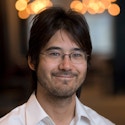
Charles Kane
University of Pennsylvania
Charles Kane and co-workers showed, extending earlier work by Thouless and collaborators, that the electronic band structures of all crystals could be classified in terms of the momentum space topology of the electronic states, and that as a consequence there exist protected states at interfaces between topologically nontrivial crystals and topologically trivial crystals. Along with related work by Shou-Cheng Zhang and others, Kane’s results have created a large and vibrant research field focused on the search for and measurement of topologically nontrivial materials, including materials that are topologically nontrivial as a result of broken symmetries. Kane’s recent work has turned towards applications for example the use of interfaces between topological insulators and ordinary superconductors to achieve a solid-state realization of Majorana fermions and the exploration of possible applications of these excitations in topological quantum computing.

Hirosi Ooguri, Ph.D.
California Institute of Technology
Hirosi Ooguri is a mathematical physicist and string theorist of exceptional creativity and breadth. His work on Calabi-Yau manifolds has yielded important new insights into the D-brane structures crucial to string theory, while his work on the relationship of supersymmetric gauge theories to string theory and to gravity has fostered the rapid development of the AdS/CFT correspondence, which relates quantum properties of gauge theories to solutions of higher-dimensional classical field equations in the presence of black holes and curved space-time. He is perhaps best known for his innovations in the use of topological string theory to compute Feynman diagrams in superstring models.

Frans Pretorius, Ph.D.
Princeton University
Frans Pretorius has made seminal contributions to the numerical solution of the equations of general relativity, in particular inventing a new computational scheme based on harmonic decomposition of the Ricci tensor, which is now a textbook method in the field. Thanks in large part to Pretorius’ innovations, accurate computer simulations of such general relativistic phenomena as the merger of two black holes have become possible for the first time after several decades of effort. These results enable the calculation of expected gravitational-wave signals that may be detected by present or planned gravitational wave observatories. Pretorius has also contributed to mathematical issues in general relativity such as the no-hair theorem in higher dimensions and the Gregory-Laflame instability of black strings.
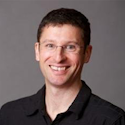
Eliot Quataert, Ph.D.
Princeton University
Eliot Quataert is an outstanding theoretical astrophysicist whose research combines many areas of physics, including gas dynamics, plasma physics, radiative transfer and nuclear physics. He is also known as a particularly effective mentor of students and postdocs. He has made fundamental contributions to the theory of astrophysical turbulence and transport properties in hot plasmas, as well as to stellar and black-hole astrophysics.
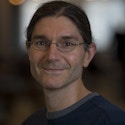
Emmanuel J. Candès, Ph.D.
Princeton University
Emmanuel Candès is a professor of mathematics, statistics and electrical engineering, and a member of the Institute of Computational and Mathematical Engineering at Stanford University. Prior to his appointment as a Simons Chair, Candès was the Ronald and Maxine Linde Professor of Applied and Computational Mathematics at the California Institute of Technology. His research interests are in computational harmonic analysis, statistics, information theory, signal processing and mathematical optimization with applications to the imaging sciences, scientific computing and inverse problems. He received his Ph.D. in statistics from Stanford University in 1998.
Candès has received numerous awards throughout his career, most notably the 2006 Alan T. Waterman Medal — the highest honor presented by the National Science Foundation — which recognizes the achievements of scientists who are no older than 35, or not more than seven years beyond their doctorate. Other honors include the 2005 James H. Wilkinson Prize in Numerical Analysis and Scientific Computing awarded by the Society of Industrial and Applied Mathematics (SIAM), the 2008 Information Theory Society Paper Award, the 2010 George Pólya Prize awarded by SIAM, the 2011 Collatz Prize awarded by the International Council for Industrial and Applied Mathematics (ICIAM), the 2012 Lagrange Prize in Continuous Optimization awarded jointly by the Mathematical Optimization Society (MOS) and Society of Industrial and Applied Mathematics (SIAM), and the 2013 Dannie Heineman Prize presented by the Academy of Sciences at Göttingen. He has given over 50 plenary lectures at major international conferences, not only in mathematics and statistics, but also in several other areas including biomedical imaging and solid-state physics.
In 2014, Candès was elected to the National Academy of Sciences and to the American Academy of Arts and Sciences. In the summer of 2014, he gave an Invited Plenary Lecture at the International Congress of Mathematicians, which took place in Seoul. Additionally, one of his Stanford Math+X collaborators, W. E. Moerner, was one of the 2014 Nobel Laureates in Chemistry.
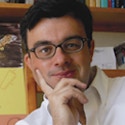
François Baccelli, Ph.D.
University of Texas at Austin
François Baccelli is an expert of stochastic network theory and communication network modeling. His research focuses on the interface of applied mathematics with communications, information theory and network sciences. Baccelli is co-author of several influential research monographs on: point processes and queues (with P. Brémaud); max plus algebra — algebraic theory for network dynamics (with G. Cohen, G. Olsder and J.P. Quadrat); stationary queuing networks (with P. Brémaud); and stochastic geometry of wireless networks (with B. Blaszczyszyn). Outside of the academic setting, Baccelli has worked on projects ranging from research on access networks with French telecommunications company Alcatel, investigating network inference with Sprint Corporation in the U.S.
Baccelli received his Doctorat d’Etat from the Université de Paris-Sud in 1983, where he wrote his thesis on probabilistic models for distributed systems. Before joining University of Texas at Austin, Baccelli’s research focused on network theory at Institut National de Recherche en Informatique et Automatique (INRIA) in Paris. He also held an academic appointment in computer science at Ecole Normale Supérieure in Paris. Prior to that, he served as head of the computer and network performance evaluation research group at INRIA Sophia Antipolis and was professor of applied mathematics at the Ecole Polytechnique. He has held visiting positions at the University of Maryland, Bell Laboratory’s mathematics center, Stanford University, Eindhoven University as a Eurandom Chair, Heriot Watt University as an Honorary Professor, University of California, Berkeley as a Miller Professor, and the Isaac Newton Institute at the University of Cambridge, where he co-organized the 2010 program on Stochastic Processes and Communication Sciences. In 2005, Baccelli was elected as a member of the French Academy of Sciences.
In taking up the Simons Chair in Mathematics and Electrical and Computer Engineering at the University of Texas at Austin, François Baccelli has worked to develop the new, interdisciplinary Simons Center on Communication, Information and Network Mathematics.
